A Brief History of Newport
Since its founding by English settlers in 1639, Newport has bustled with diversity. The policy of liberty of conscience and religion embodied in the Newport Town Statutes of 1641 was a result of the religious beliefs of its founders and their frustration over political intervention in their religious life in Boston. This policy was a beacon to settlers with wide-ranging religious beliefs, who came primarily from other colonies at first, and co-existed in the rapidly growing settlement, unaware that their town’s religious diversity was a prototype of the America to come. However, a central paradox in Newport and Rhode Island’s early history was the combination of a commitment to liberty in the religious realm with a willingness to participate in the practice of enslaving other human beings. This contradiction was recognized from the earliest days by many, but it took over 100 years for the abolition movement to gain prominence in the community.
The first English settlers arrived on Aquidneck Island in 1638 following a remarkable woman named Anne Hutchinson. She had been driven out of Boston for her religious beliefs which challenged the very foundations of Puritanism. She and her band of supporters followed the path taken by Roger Williams when he, too, was banished from Massachusetts for religious reasons. After consulting with Williams, her group arranged with the native Americans to settle on Aquidneck Island.
What the English settlers found on their arrival was hardly an empty wilderness. Native people had been in the area for at least 5,000 years, and had established sophisticated land management and fishing practices. Current evidence points to the existence of a large summer settlement in what is now downtown Newport, and the work these native people had done clearing the land was one of the factors that made this area attractive to English settlers.
View from top of Washington Square, or “The Parade.” Oil on canvas, painted by an unidentified Hessian artist, 1818.
Ann Hutchinson’s group settled at the northern end of the island in an area known as Pocasett. In just over a year, however, that settlement split in two. A group lead by William Coddington and Nicholas Easton moved south to form Newport in 1639.
By the time they arrived in Newport, many of these settlers were becoming Baptists and embraced a belief that was central for the Baptists of Europe at the time – the separation of church and state. These early settlers founded their new town on the basis of liberty of conscience and religion and Newport became one of the first secular democracies in the Atlantic world. The founders’ commitment to religious freedom had a profound impact on all aspects of the town’s subsequent history.
Among the religious groups attracted to this haven in a world of threatening intolerance were Quakers and Jews. Their presence, along with their international trade connections, helped transform the town from a small agricultural outpost to one of colonial America’s five leading seaports (along with Boston, New York, Philadelphia, and Charleston). Although the Jews came to Newport in the 1650s, their real contribution to the cultural and economic life came in the 1750s. The Quakers also came to Newport in the late 1650s. The Society of Friends flourished and grew, and, by 1700, over half of Newport’s population were members of the Society of Friends.
The Quakers became the most influential of Newport’s numerous early congregations, influencing the political, social and economic life of the town into the 18th century, and their “plain style” of living was reflected in Newport’s architecture, decorative arts and early landscape.
The Quaker’s neighborhood on Easton’s Point was home to some of the most highly skilled craftsman in colonial America. Among the best known of these were the Townsend and Goddard families, who made extraordinarily fine and beautiful furniture.
A Plan of the Town of Newport in Rhode Island. Surveyed by Charles Blaskowitz and published by William Faden, 1777.
Trade and the export of rum, candles, fish, furniture, silver, and other goods were the main engines of economic growth during the 18th century, activities inexorably linked to Newport’s participation in the slave trade and widespread ownership of slaves by families throughout the city.
During this time the waterfront bustled with activity with over 150 separate wharves and hundreds of shops crowded along the harbor between Long Wharf and the southern end of the harbor. As Newport’s trade throughout the Atlantic basin grew, the city became an epicenter in the development of modern American capitalism.
During the 17th century the cornerstones of Newport’s architectural heritage were laid. The buildings that survive from that period – the Old Stone Mill, the Wanton-Lyman-Hazard House, and the White Horse Tavern – are part of Newport’s rich, architectural tapestry that today also includes the great “cottages” along Bellevue Avenue. By the 1760s, economic growth spurred a building boom which included hundreds of houses and many of the internationally important landmarks that survive today, such as Trinity Church, the Colony House, Redwood Library, and the Brick Market (now home to the Museum of Newport History).
Newport helped lead the way toward the Revolution and independence. Because the city was such a well-known hot-bed of revolutionary fervor, and because of its long history of disdain for royal and parliamentary efforts to control its trade, the British occupied Newport from 1776 to 1779, and over half of the town’s population fled. The British remained in Newport despite efforts to drive them out by patriot forces in partnership with the French for the first time in the Revolution. Eventually the British did withdraw and the French, under the leadership of Admiral deTiernay and General Rochambeau, began a sojourn in Newport that lasted until 1781 when they left Newport on their historic march with General Washington to Yorktown to assist in the decisive victory there.
The British occupation had done irreparable damage to Newport’s economy. Faced with a bleak future, Newport in the early 19th century was forced to re-invent itself. Newport had been bypassed by industrialization and its landscape became frozen in time. Ironically, this became an asset for the town as it transformed itself into a summer resort and used its picturesque qualities to advantage in attracting summer visitors. In the antebellum period, Newport became a center for an influential group of artists, writers, scientists, educators, architects, theologians, and landscape designers. These men and women reshaped the cultural underpinnings of American life, and included Henry and William James, Thomas Wentworth Higginson, Julia Ward Howe, William Ellery Channing, William Barton Rogers (the founder of M.I.T.), Alexander Agassiz, and many more.
Traffic on Bellevue Avenue at Bath Road, looking south. The Travers Block (completed 1871) is visible at center. Photograph by Clarence Stanhope.
Later summer colonists during the Gilded Age included elite familes from South Carolina, the King and Griswold families of New York, and later the Vanderbilts. These families and many more whose presence here helped transform Newport into the Queen of the Resorts, built the mansions for which Newport has become famous, employing architects Richard Morris Hunt, McKim Mead and White, Peabody and Stearns, and others. Several of these mansions have become major tourist attractions.
Newport’s history has always been tied to the sea. During the colonial period the city’s harbor teemed with trading ships. With the arrival of the Summer Colony and the New York Yacht Club, Newport was on its way to becoming a yachting capital. The Yacht Club brought the famed America’s Cup to Newport in the 1930s where it stayed until lost to the Australians in 1983. The fishing industry is still a vital part of Newport’s economy, as is the United States Navy. The US Navy has roots in Newport’s early colonial fleet, and has been a significant presence in Newport since the 1860s. Its major components were Naval War College and the Torpedo Station (now Naval Undersea Warfare Center) both of which were founded immediately after the Civil War. The Navy presence on Aquidneck Island grew and eventually included the Naval Education Training Center and the North Atlantic Destroyer Squadron which had its home port at the Newport Naval base until the 1970s. Despite the loss of the fleet, the Navy is still the largest employer in the area, bringing many industry and service businesses to the area as well.
In the late 19th and 20th centuries various groups such as the Irish, Greeks, Italians, Portuguese, Filipinos, Cambodians, and Hispanics joined groups such as Jews, African Americans, and Native Americans who had been in Newport for some time, enriching the ethnic diversity of the town. African Americans from Virginia and other areas moved to Newport and joined a thriving community that continues to be a vital part of Newport’s history. The Irish came to Newport in the 1820s, drawn here by the work available to them at Fort Adams. Despite laws from 1719 that discriminated against Catholics by denying them the right to become “freemen”, Catholics who immigrated to Aquidneck Island found a relatively tolerant haven from the virulent anti-Catholic and Irish sentiments in Boston and other towns at the time. Many of the Irish families who made Newport home during the early 19th century still live and prosper in Newport, maintaining close links with the land of their ancestors.
Northern Thames Street, 1968. Within approximately ten years, the western section of Thames Street pictured in the photograph was demolished to make way for the Brick Market redevelopment project. Photograph by John T. Hopf.
After World War II, one of the most successful historic preservation movements in the country saved hundreds of structures throughout Newport County. That effort began in the 1840s when George Champlin Mason, writer and editor of the Newport Mercury (a weekly newspaper still published today by the Newport Daily News) fought to save Trinity Church. He helped found the Newport Historical Society, which preserved the Seventh Day Baptist Meeting House in 1884, and later acquired and restored the Wanton-Lyman-Hazard House, and the Great Friends Meeting House. Other groups who have taken the preservation movement to heroic levels include the Preservation Society of Newport County, the Newport Restoration Foundation, and several grassroots organizations such as Operation Clapboard.
With the success of the preservation movement, Newport began to recover from the economic downturn that came when the destroyer fleet was pulled out of Newport. The Navy continued, and a new kind of tourism – now refered to as “Heritage Tourism”- began to develop slowly. Visitors to Newport now come to learn about the area’s remarkable history as well as to enjoy the beauty and the hospitality of the City by the Sea. There is, of course, more than mansions for visitors to see in Newport. There are beautifully restored colonial landmarks for visitors to explore along with, fine small museums, such as the Museum of Newport History in the Brick Market which is a perfect place to begin a visit to the area where visitors can get an overview of the city’s history. The Newport Art Museum, the Tennis Hall of Fame, Audrain Automobile Museum, Fort Adams, Redwood Library, Touro Synagogue, Trinity Church, and many other attractions offer the visitors an unrivaled opportunity to explore aspects of this country’s history. Music festivals, such as the Jazz and Folk Festivals and the Newport Music Festival are all major events drawing thousands to Newport every summer.
The stereotype of Newport solely as a playground for the wealthy during and after the Gilded Age is in contrast with local reality. While Newport continues to be home to summer visitors of dazzling wealth, and while some of them have made Newport their year round home, most of the residents of the City by the Sea continue to be middle and working class. Given Newport’s image, it is ironic that the city also has the largest number of low-income housing units in the state of Rhode Island.
Newport’s history is remarkable in many ways, but perhaps the most unique aspect is the fact that so much of its history is still visible on the landscape in an unparalleled concentration of preserved architecture. It continues its commitment to liberty of conscience and religion and Newport’s resilience and creativity in meeting the economic changes that have overtaken it offers strong proof that diversity works in keeping the city alive and vibrant.

Charting History Traveling Exhibit
- What is the name and location of your institution? *
- What dates are you interest in hosting for? [Note: the exhibit will be lent out for two month periods] *
- Which sections of the exhibit are you interested in using? Indigenous People (1 Panel) Conflict (4 Panels) Commerce (4 Panels) Conscience (4 Panels) All Panels
- Name * First Last
- Additional comments:
- Comments This field is for validation purposes and should be left unchanged.
- Share full article
Advertisement
Supported by
WHERE THE YACHTS ARE
WHERE THE YACHTS ARE; NEWPORT'S GRAND TRADITION
By Joanne A. Fishman
- May 20, 1990
Newport has flirted with sailors and the sea since it was settled in 1639, and its history charts the rise and fall of life under sail from Colonial days through the era of the America's Cup.
During the summer, pleasure boats of every size and shape float shoulder to shoulder at moorings in Newport Harbor and line the docks of the marinas, dwarfing the presence of the commercial trawlers and lobster boats. The L-shaped harbor, one of the finest on the East Coast, stretches a mile and a half from the lush hills of Brenton Cove to the commercial docks on Long Wharf and half a mile across between Goat Island and the bustling shore. At the entrance, it is 30 feet deep.
In Colonial days, the harbor was the hub of activities for the ''triangle trade'' that produced great fortunes. Ships left Newport for Africa loaded with rum, which was traded for slaves. The slaves were transported to the West Indies and, in turn, traded for molasses, which was hauled back to Newport and made into rum. During the Revolution, however, Newport was occupied by the British for several years and by the end of the war, the once prosperous port was devastated, never to return as a force in shipping.
In the 1730's, Newport attracted its first summer visitors, Southern plantation owners who sailed north to escape the oppressive heat. By 1890, New Yorkers were at the helm - the Astors, the Vanderbilts and the Belmonts built castles, known as ''cottages,'' in Newport and came for six or seven weeks each year. They included William K. Vanderbilt, who commissioned the architect Richard Morris Hunt to design ''the very best living accommodation that money could buy.'' The result, at a cost of $11 million, was a sumptuous classical building in the style of a French Renaissance palace, known as Marble House ($7 million was for marble). Not to be outdone, William's brother, Cornelius, hired Hunt to build The Breakers, a 70-room ''cottage'' of alabaster, marble and mosaic in the style of the Italian Renaissance. And so it went, as the New York rich vied with one another to create the most lavish, most stupendous summer homes. The Astors owned Beechwood; the Wetmores, Chateau-sur-Mer and the Oelrichs family, flush with silver from the Nevada Comstock Lode, hired Stanford White to design Rosecliff, in homage to the Grand Trianon at Versailles. In all, some 60 ''cottages'' were built.
These elite vacationers filled their days with lawn parties and picnics, their nights with balls and dinner parties of unprecedented opulence. For their sport, the Newport Casino was built in 1880, and in 1881, the first national tennis championships were held there. On Newport Neck, they swam at the exclusive Bailey's Beach club and played golf at the seaside links of the Newport Country Club, just as their counterparts do today. And in the harbor, their magnificent yachts rode at anchor. Each of J. Pierpont Morgan's series of steam yachts was called Corsair. The fastest, the third Corsair, was 304 feet long, with a black hull and a gilded figurehead. It became the flagship of the New York Yacht Club when it was commissioned in 1899, while Morgan was the club's commodore. Other notable yachts included the 250-foot Nourmahal, belonging to William and John Jacob Astor and James Gordon Bennett's Lysistrata. At 314 feet, the white-hulled Lysistrata was considered the most luxurious steam yacht of its day.
Many years during the season, the New York Yacht Club fleet arrived for its annual summer cruise, a tradition it maintains. Finally the club moved the America's Cup races to Newport from New York in 1930, as much for the cooling breezes as to escape the congestion and debris in New York Harbor.
During the Civil War, Newport became the site of the United States Naval Academy. The Naval Training Station and War College were established in the 1880's on Coasters Harbor Island, and by the turn of the century Narragansett Bay had become the primary anchorage for the Atlantic Fleet. But in 1973, the Fleet's Cruiser-Destroyer Force was moved to Southern ports, following budget cuts. The War College remains, as does its museum documenting the history of the weapons of warfare from pre-Revolutionary days to the present, with special reference to the torpedo, which was tested off nearby Goat Island.
In the 1970's, the town started to feel the benefits of the Newport Bridge, completed in 1969, which links it to the main approach from the south via Interstate 95 and Route 138, making it more accessible to tourists. Slowly, development picked up and crumbling areas were refurbished. Doris Duke, the tobacco heiress, sparked Newport's renaissance 20 years ago by buying up rundown 18th-century houses, rebuilding and renting them to local merchants and residents.
Meanwhile, the America's Cup race became more celebrated and more internationally competitive. Newport, now entrenched in Cup business, renamed its main thoroughfare along the waterfront America's Cup Avenue. Marinas, hotels, guesthouses and restaurants catered to yachtsmen from around the world who poured in for the event, held every three or four years. The historic mansions were used for the America's Cup Ball, Newport's premier social event, as well as for lesser balls and parties. Between black-tie affairs, local restaurants thrived.
The end of this era, during which the New York Yacht Club held the America's Cup for 132 years, came at Marble House, which Howard S. Vanderbilt, the defender of three America's Cups, gave to the Preservation Society of Newport County. Here, in 1983, the Cup was transferred to Alan Bond and the Royal Perth Yacht Club of Western Australia.
''We feel a great loss for the Cup, it was our prize. For a New Yorker, it would be like losing the Brooklyn Bridge,'' said Mary Walsh, the 70-year-old doyenne of Newport's America's Cup scene.
Into the void created by the loss of the Cup stepped the New York Yacht Club and a new organization called Sail Newport,formed by local sailors and merchants to promote the sport in town. In six years, the nonprofit group has established a first-class public facility on the harbor at Fort Adams State Park, created world-class sailing events and organized a public sailing program. Near Fort Adams, on a hillside overlooking Brenton Cove is the New York Yacht Club's waterfront station - a stately French Renaissance chateau-style residence called Harbour Court. The club already had its headquarters in midtown Manhattan, in a building on West 44th Street, with an arrestingly baroque facade that resembles the stern of a galleon. After the loss of the Cup, however, members felt a Newport presence would enable the club to continue its key role in international sailing events.
In June this year, as in even-numbered years since 1906, Brenton Cove and vicinity will be the rendezvous for the Bermuda Race fleet, one of the largest gatherings of cruising yachts in the country. The main event is the race from Newport to Bermuda, which starts this year at 12:50 P.M. on Friday, June 15, but many boats will arrive well in advance for the preliminaries, the Onion Patch and Du Pont Series, held a few days earlier. More than 180 entries are expected this year for the Bermuda Race, according to Bart Dunbar, the race committee secretary. The race starts at Brenton Reef Tower, the 87-foot-high red-and-white marker at the entrance to Narragansett Bay. An ideal place to watch is from the spacious lawns of the Inn at Castle Hill, with its outdoor bar and commanding view. Summer Sunday afternoons on the inn's lawns have become a tradition in themselves, packing the parking lot.
Newport is focused on its harbor. It is also divided into distinct neighborhoods. The Point section, just south of the Newport Bridge down to Goat Island Causeway, is the oldest part of town, with houses dating back to Colonial days. It includes the White Horse Tavern, the oldest operating tavern in the country and one of the city's best-known restaurants. Nearby is the starkly simple Friends Meeting House at 21 Farewell Street. Built in 1699, it is the oldest religious structure in Newport. Farewell Street, lined with historic homes, was so named because in Colonial days it led to the cemetery. Near the water, on Washington Street, is the restored 18th-century William Hunter House, with its splendid furnishings by the Townsend and Goddard families, celebrated Newport cabinetmakers.
The waterfront shopping area runs along America's Cup Avenue and Thames Street, up the hill to the Newport Court House in Washington Square and the Touro Synagogue. The oldest synagogue on the North American continent, it was founded by Sephardic Jews who had fled Spain for Holland in the late 15th century in search of religious freedom. The ornate traditional interior, in marked contrast with the plain brick colonial exterior, was modeled after the Spanish-Portuguese Synagogue in Amsterdam, where the community lived for nearly two centuries before crossing the Atlantic.
The Brick Market, on Thames Street, was originally used as a market and granary. Today it is the focal point for the Brick Market Place, a complex of 40 specialty shops and restaurants. Along the waterfront, such restaurants as Le Bistro, the Clarke Cooke House and the Black Pearl, share wharf space with sailmakers, yacht brokers and expensive boutiques. Gone are the dives full of carousing sailors -a good portion of Thames Street was torn down to make room for the wider America's Cup Avenue. Nonetheless, enough narrow cobblestone streets remain to recall a lustier past. On a stroll through the restored Bowen's Wharf, one can almost hear the creak and groan of coastal schooners and imagine the dockside commotion.
Behind the post office on Thames Street and running up the hill to Bellevue Avenue is the historic hill district. Its main thoroughfare is Spring Street whose name dates back to the founding of the town. As the story goes, when William Coddington and eight friends landed on April 28, 1639, to form the first colony, their search for fresh water led them to a spring located near what is now the intersection of Spring and Touro Streets. The first residents decided that the town would be ''laid out and built on both sides of the spring and by the sea southward.'' As the town grew, homes were built further up the hill. Although it is largely residential, this section includes the Spring Street antique and craft shops, as well as Muriel's Restaurant, known for its seafood chowder.
Farther up the hill, where Memorial Boulevard meets Bellevue Avenue, begins the district housing the mansions of the Preservation Society of Newport County. The society offers tours through six spectacular ''cottages'' - The Breakers, Rosecliff, The Elms, Kingscote, Chateau-sur-Mer and Marble House. Others, including Belcourt Castle and Beechwood, are privately owned but also open to the public. Behind the mansions, an extended walk through their backyards takes one on a spectacular three-mile coastal trail known as Cliff Walk, which winds up and down the granite cliffs over the sea. Just beyond Land's End, where the waves are churned into white froth on black boulders, the trail ends. (Wear sturdy shoes and be careful of erosion after rain.) The area along Thames Street south of Memorial Boulevard became known in America's Cup days as the yachting village. As a number of the waterfront marine facilities have been, or are being, replaced by condominiums, the influence of commercial marinas has lessened in recent years. However, J. T. O'Connell's Ship Chandlery remains, as does the Armchair Sailor Bookstore on Young Street, an invaluable source of marine books and publications. Of the 45 or so restaurants in Newport, probably one-quarter are located here, including two of the three waterfront landmarks - Christie's and The Pier. The third, the Moorings, is a short walk north. The rows of bars that existed during the Navy days have been replaced with boutiques, antiques shops and occasional craft shops such as Thames Street Pottery, where the owner, Bridget Butlin, can be found in the rear of her tiny store turning out high-fired stoneware vases and bowls.
Still, the essential lure for most visitors to Newport remains the sea. The waters off Newport are blessed with ideal sailing conditions. On summer days, the prevailing southwesterly breeze usually arrives like clockwork by 12:30 P.M. Starting at 8 to 10 knots, it builds to 20 knots by late afternoon and dies away in the evening. And sailors know that if, in the morning, the sky is overcast or the wind is out of the north, it is likely that there will be no wind in the afternoon and the temperature will soar. Sometimes in late summer, as cooler air moves over warm water, a notorious, soupy fog appears; the same thing happens in spring, when the conditions are reversed.
Newport in the early morning of a summer's day holds a special pleasure. The throngs that create a carnival atmosphere haven't started to appear. The only stirrings are from the fishermen. Sea gulls swirl as the first light turns the water rosy pink, silhouetting boats silent at anchor. Later in the day, the breeze will come up and, once again, sailors will head for the sea.
SIGHTS TO SEE
The Preservation Society of Newport County, 118 Mill Street, Newport, R.I. 02840 (telephone: 401-847-1000), maintains six cottages, all on or in the immediate vicinity of Bellevue Avenue. From May through September, all six of the mansions - The Breakers, Chateau-sur-Mer, The Elms, Kingscote, Marble House and Rosecliff - are open daily from 10 to 5; off-season and evening hours vary from mansion to mansion, and are available from the Society. Individual admissions are $5 ($6 for The Breakers); combination tickets range from $9.50 for any two mansions to $22 for all six. The Society will send informational material upon request. Hunter House, 54 Washington Street (401-847-1000), built in 1748, is also owned by the Preservation Society, and may be included in the combination admission ticket, as may Green Animals, a topiary garden on Cory's Lane in nearby Portsmouth. Beechwood, Bellevue Avenue (401-846-3772), is an Italianate mansion built in the 1850's and later acquired by the Astor family as a summer home. A resident group of actors recreates daily life as it used to be, upstairs and down. Open daily May 14 through October, 10 to 5, November through December 17, 10 to 4; open Friday through Sunday, January through May 13, 10 to 4. Admission: $5.50.
Belcourt Castle, Bellevue Avenue (401-946-0669), was built in the 1890's in the form of a Louis XIII hunting lodge by Richard Morris Hunt for the Belmont family. Open 9 to 5, mid-June through October; call for hours out of season. Admission: $5.
Hammersmith Farm, Ocean Drive (401-846-0420), was built in 1887, with gardens designed by Frederick Law Olmsted. Home of the Auchincloss family, it was the setting for the marriage of John F. Kennedy and Jacqueline Bouvier, in 1953. Open daily April through October; 10 to 5 in spring and fall, 10 to 7 from Memorial Day weekend through Labor Day. Admission: $5.
Touro Synagogue, 72 Touro Street (401-847-4794), is open weekdays and Sunday, June 26 to Labor Day, 10 to 5. Open Sunday through Thursday, 1 to 3, mid-April to June 26, and Labor Day through Thanksgiving. In winter, open Sunday, 1 to 3, or by prior appointment. Services are held on Friday evening and Saturday morning. Free. International Tennis Hall of Fame, 194 Bellevue Avenue (401-849-3990), housed in the Newport Casino, is open daily, 10 to 5, May through September; 11 to 4, October through April. Admission: $4.
Naval War College Museum, Coasters Harbor Island (401-841-4052)is open weekdays, 10 to 4; weekends, noon to 4, June through September; open 10 to 4, weekdays only, October through May. Free. Friends Meeting House, Marlborough and Farewell Streets (401-846-0813), built in 1699, contains an exhibition of Quaker life and dress. Open daily, mid-June through August, by appointment only. Admission: $2.
YACHTING HIGHLIGHTS
Some of the main events to take place in Newport's waters are:
June 9, 10: The New York Yacht Club's 136th Annual Regatta. About 150 large racing yachts gather in Newport Harbor. The event starts at 9; the best place to watch from is the Inn at Castle Hill lawn.
June 9-13: Onion Patch/du Pont series, conducted by the New York Yacht Club. Call for times and course location: 401-846-1000 (ask for the sailing secretary).
June 15: Bermuda Race, conducted by the Cruising Club of America and the Royal Bermuda Yacht Club. The best place to see the boats gathering is at the Inn at Castle Hill, from 10 to noon.
July 20-22: Volvo Newport Regatta, organized by Sail Newport (401-846-1983): 300 boats in 14 different classes. Races start at 11; best view, Fort Adams State Park and Inn at Castle Hill.
August: 16-19: Audi Sailing World National Offshore One-Design Regatta, at the Newport Yachting Center: 125 big boats expected to compete. Call for time and race location: 401-847-1588.
August 22-26: Return of a Legend: J-Class on Tour Regatta - Endeavour versus Shamrock V. The two 130-foot-long J-Class sloops, the largest boats that raced for the America's Cup in the 1930's, race each other. Boats arrive on August 22 and are on display at the Newport Yachting Center, Commercial Wharf, on August 23. There is a practice on Narragansett Bay on August 24; on August 25, the East Passage race starts at 10 A.M. at Fort Adams State Park and finishes at Castle Hill at 4 P.M. On August 26, the Block Island Sound race starts at 11 A.M. and finishes at 4 P.M., both at Castle Hill. Call for information and best viewing locations: 401-849-3060.
August 24-26: Lexis International Sail Challenge. Team sailing invitational, sailed in J-35s, to benefit United States Olympic sailing team. Organized by Sail Newport and People-to-People Sport (401-846-1983). Races start at 11; best view, Fort Adams State Park and Inn at Castle Hill.
September 1-2: Classic Yacht Regatta, organized by the Museum of Yachting (401-847-1018). Best view of the race (Sept. 1, 10 to 5) and parade (Sept. 2, 1 P.M.), Fort Adams State Park.
September 15: Start of the BOC Group Race. Some 35 single-handed sailors are expected to begin the first of four legs in this 26,000-mile race around the world. Noon start off Fort Adams State Park. Yachts are docked at Goat Island Marina; call race headquarters for information: 401-847-0100.
September 23-29: International Class A Yachting Association Maxi Worlds, sponsored by the New York Yacht Club. The largest ocean-racing yachts from around the world rendezvous for a race in Newport. Call for times and course location: 401-846-1000 (ask for the sailing secretary).
CHECKING INTO NEWPORT
SELECTED LODGINGS
Newport is well supplied with accommodations, ranging from such chain hotels as Marriott, Sheraton and Howard Johnson to bed-and-breakfast inns housed in former mansions. Bed and Breakfast, Newport, 33 Russell Avenue, Newport, R.I. 02840 (telephone: 401-846-5408), has an illustrated brochure listing about 20 bed-and-breakfast establishments. The service is available from 9 A.M. to 9 P.M. daily. The following highly selective list offers some typical establishments; prices quoted are for double rooms during the summer season. Winter rates can be considerably lower.
The Viking, 1 Bellevue Avenue, Newport, R.I. 02840 (800-556-7126; 401-847-3300), was built in 1926 by a consortium of Bellevue Avenue residents to house overflow guests; its 180 rooms cost from $129 to $149.
Inn on Long Wharf, 142 Long Wharf, Newport, R.I. 02840 (401-847-7800), has 40 suites with kitchenette, all facing the harbor, for $240.
Cliff Walk Manor, 82 Memorial Boulevard, Newport, R.I. 02840 (401-847-1300), a Victorian mansion set on four acres overlooking the sea, has 24 rooms (20 with sea view) for $150. Closed January and February.
Mill Street Inn, 75 Mill Street, Newport, R.I. 02840 (401-849-9500), is a converted 19th-century mill with 23 rooms for $195.
Harborside Inn, Christie's Landing, Newport, R.I. 02840 (401-846-6600), has 14 rooms and suites, all with a water view, ranging from $145 to $190.
Cliffside Inn, 2 Seaview Avenue, Newport, R.I. 02840 (401-847-1811), is a Victorian summer home close by the sea with 10 rooms, ranging from $95 to $175.
HEARTY FARE
Most Newport restaurants specialize in fresh seafood preparations, while also providing a selection of traditional American meat dishes. Prices quoted are the average for dinner for two, with wine. Inn at Castle Hill, Ocean Avenue (401-849-3800). Open Tuesday through Saturday for lunch and dinner and for Sunday brunch, Memorial Day through October; open Thursday through Sunday for dinner and for Sunday brunch, April 12 to Memorial Day: $70.
White Horse Tavern, Farewell and Marlborough Streets (401-849-3600). Open daily for lunch (except Tuesday) and dinner: $100.
Le Bistro, Bowen's Wharf (401-849-7778). Open daily for lunch and dinner: $50 to $75.
Clarke Cooke, Bannister's Wharf (401-849-2900). Open daily for lunch and dinner, May through October; open Friday and weekends the rest of the year: $50 in the cafe, $100 in the restaurant.
The Black Pearl, Bannister's Wharf (401-846-5246). Open daily for lunch and dinner except during January or February: $60 to $70 in the tavern, $100 in the restaurant.
Muriels, 58 Spring Street (401-849-7780). Open daily for breakfast, lunch, dinner and for Sunday brunch, May through September; closed Sunday evenings off-season: $45, bring your own wine.
Christie's, Christie's Landing (401-847-5400). Open daily for lunch and dinner: $65.
The Pier, Howard Wharf (401-849-3100). Open daily for lunch and dinner: $60.
The Mooring, Sayer's Wharf (401-846-2260). Open daily for lunch and dinner: $65.
Joanne A. Fishman is the author of ''The Guide to High Performance Powerboating'' (William Morrow & Company).
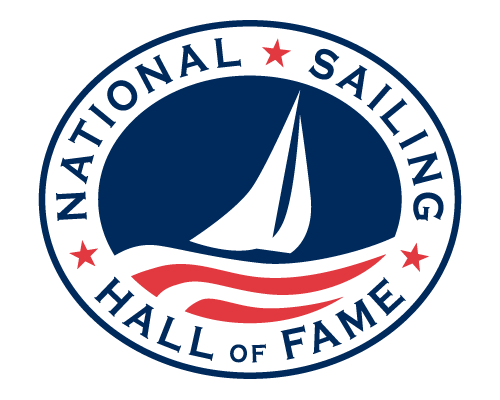
New York Yacht Club
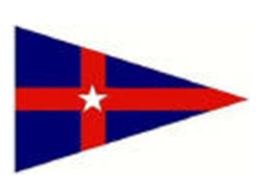
Stories from the New York Yacht Club
New York Yacht Club 37 West 44th Street New York, NY 10036-6643 (212) 382-1007
Website: http://www.nyyc.org/
The Isle of Wight in the Solent has long been the epicenter of yachting in England. In 1851, a schooner painted black arrived there looking to win races. This was the yacht America, owned by John Cox Stevens, the first commodore and other members of the New York Yacht Club.
NEW YORK YACHT CLUB BECOMES NSHOF FOUNDING MEMBER

These nine individuals agreed to form the New York Yacht Club, with Stevens to serve as commodore. With much enthusiasm for their accomplishment, the group further agreed to assemble their yachts three days later and cruise to Newport, Rhode Island.

A summer cruise among New York Yacht Club members has been an annual event ever since, with the exceptions of 1861, 1898, and the war years of 1917-1920 and 1941-1945. In 1998, the club celebrated the 100th anniversary of its first cruise to Maine.
A rich and storied history of the New York Yacht Club is available on their website:
http://www.nyyc.org/about/history-heritage
BACK TO YACHT CLUB STORIES PAGE
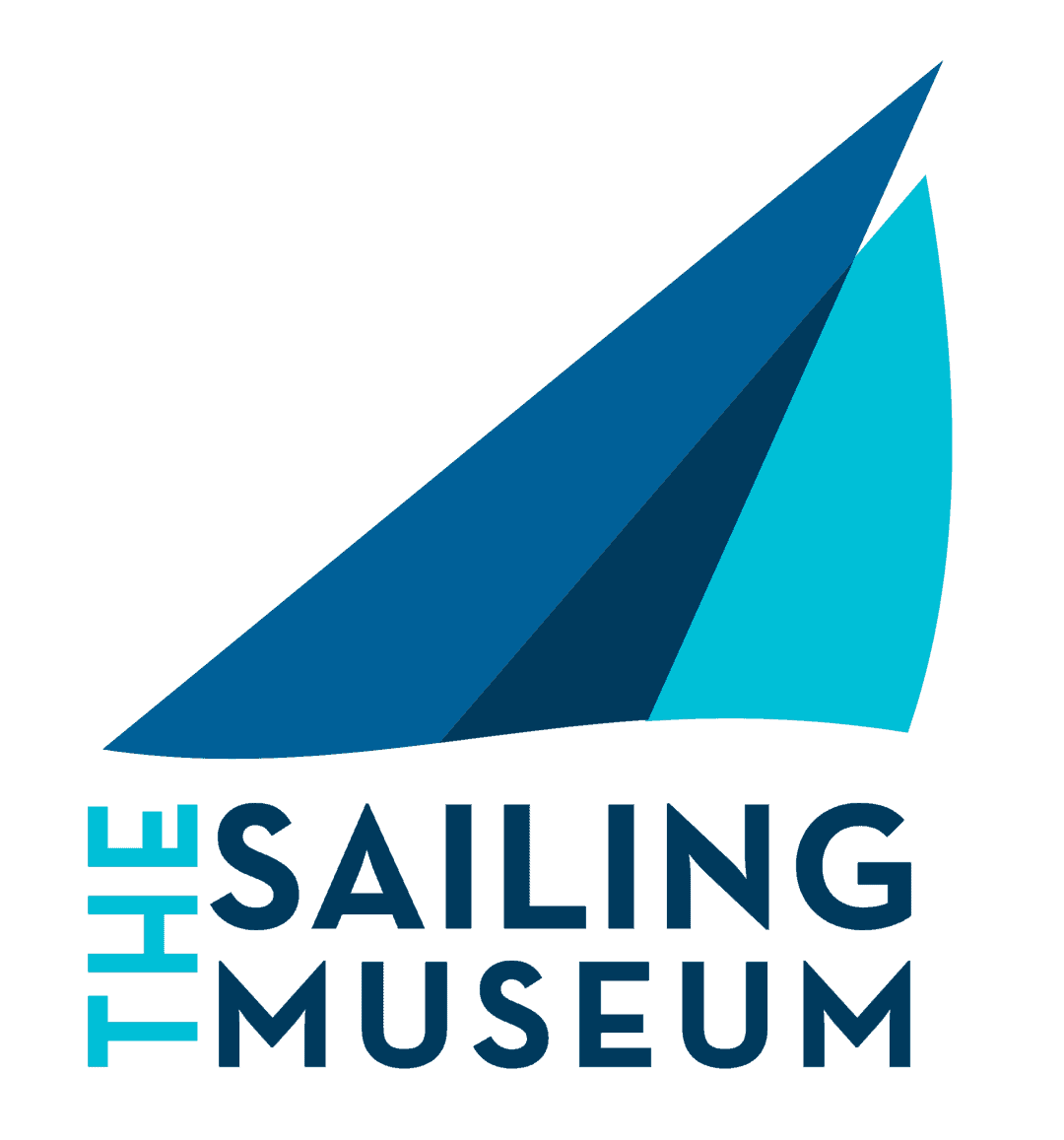
- Yacht Clubs
New York Yacht Club
37 West 44th Street
New York , NY 10036
(212) 382-1000
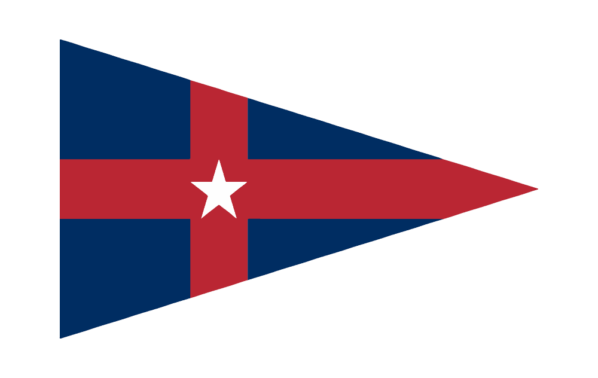
The Isle of Wight in the Solent has long been the epicenter of yachting in England. In 1851, a schooner painted black arrived there looking to win races. This was the yacht America, owned by John Cox Stevens, the first commodore and other members of the New York Yacht Club.

These nine individuals agreed to form the New York Yacht Club, with Stevens to serve as commodore. With much enthusiasm for their accomplishment, the group further agreed to assemble their yachts three days later and cruise to Newport, Rhode Island.

A summer cruise among New York Yacht Club members has been an annual event ever since, with the exceptions of 1861, 1898, and the war years of 1917-1920 and 1941-1945. In 1998, the club celebrated the 100th anniversary of its first cruise to Maine.
A rich and storied history of the New York Yacht Club is available on their website .
Quick Links
Getting Here
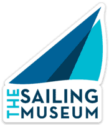
The Sailing Museum & Hall of Fame
365 Thames Street
Newport, RI 02840
401.324.5761
John Rousmaniere’s many books include The Golden Pastime: A New History of Yachting, The Annapolis Book of Seamanship , and histories of the America’s Cup, maritime photography, ocean racing, and classic yachts. His Fastnet, Force 10 was hailed as “a narrative worthy of the best sea literature” by the Los Angeles Times . Sail magazine called A Berth to Bermuda “Both a grand entertainment and an invaluable resource for aficionados of the sport of ocean racing.”
The New York Yacht Club: A History, 1844-2008
by John Rousmaniere
This definitive new history of America's oldest yacht club and one of the world's best known clubs covers the Club from its founding in the cabin of a small sloop in 1844 through the America's Cup years - the longest winning streak in history - before the cup was finally lost in 1983. Since then, the Club has found a whole new, dynamic life as an active, modern yacht club that still treasures its past with its superb clubhouses and fabulous art collections in New York and Newport, RI. This lavishly illustrated book will be an engaging account of yachts, races, and personalities with names like Harold Vanderbilt, J. Pierpont Morgan, Dennis Conner, Ted Turner, and today's great sailors who have shaped the Club and worldwide yachting. Author John Rousmaniere is America's preeminent yachting historian. His many books include The Golden Pastime: A New History of Yachting; The Low Black Schooner: Yacht America, 1851-1945; A Berth to Bermuda: 100 Years of the World's Classic Ocean Race; and Fastnet, Force 10.
ISBN: 978-0-9706-442-2-0
ISBN Limited Edition: : 978-0-9706-442-3-7
10 x 10, 336 pages, October 2008
200 color and black and white illustrations, hardcover
Watch a preview of It's All About the Sailing , A Companion DVD to The New York Yacht Club: A History, 1844-2008

Navigating the Elegance: A Comprehensive Guide to Newport County’s Yacht Clubs

- September 20, 2023

Newport, Rhode Island, renowned for its rich maritime history and picturesque coastal scenery, is a hub for sailing enthusiasts and luxury seekers alike. The city is home to a collection of prestigious yacht clubs that offer an exquisite blend of nautical charm, impeccable services, and breathtaking vistas.
A number of our Hogan Associates agents are active members of local yacht clubs and can offer insight and recommendations to suit your needs. While programs vary, typical services include boat storage and maintenance, mooring services, sailing instruction, race management, social events, and junior sailing programs. This overview of the prominent yacht clubs of Newport, as well as nearby Jamestown, Tiverton, and Little Compton is a glimpse into the offerings and options available.
New York Yacht Club (NYYC)
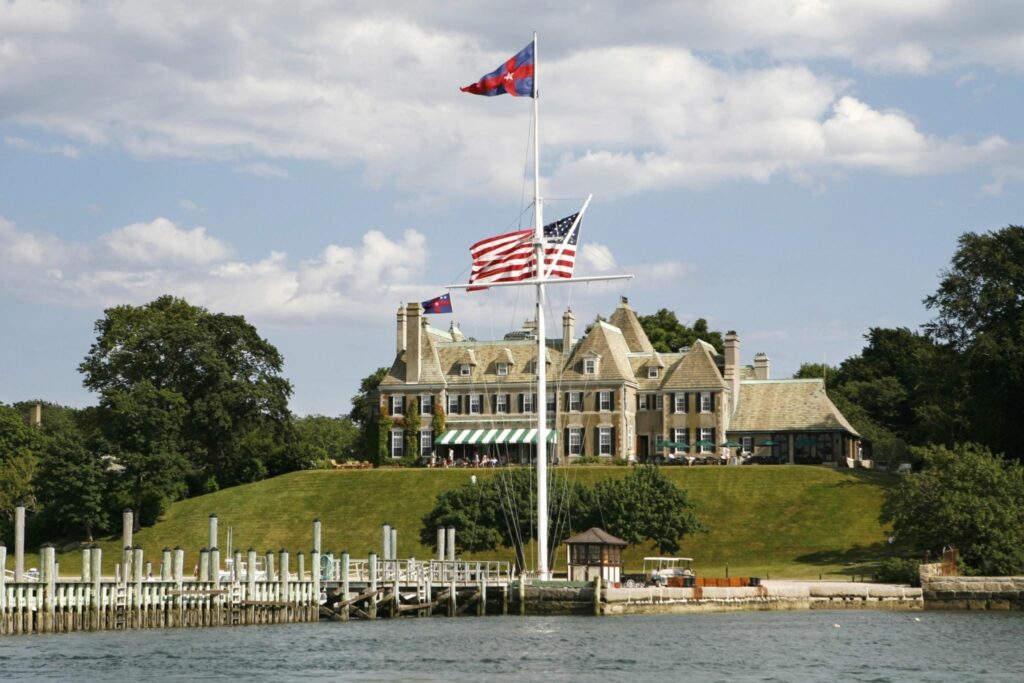
5 Halidon Avenue, Newport, RI
The New York Yacht Club, founded in 1844, is the third oldest yacht club in the United States and an iconic symbol of sailing heritage. While its headquarters remain at the New York Yacht Club Building in New York City, its Rhode Island location is nestled in the exquisite Harbour Court estate and offers stunning panoramic views of Narragansett Bay. Membership here provides access to world-class dining, sailing events, and upscale amenities. The club also offers a range of sailing programs and regattas, making it an ideal choice for both experienced sailors and newcomers to the sport. The America’s Cup trophy was first won by members in 1851 and held by the NYYC until 1983.
Newport Yacht Club
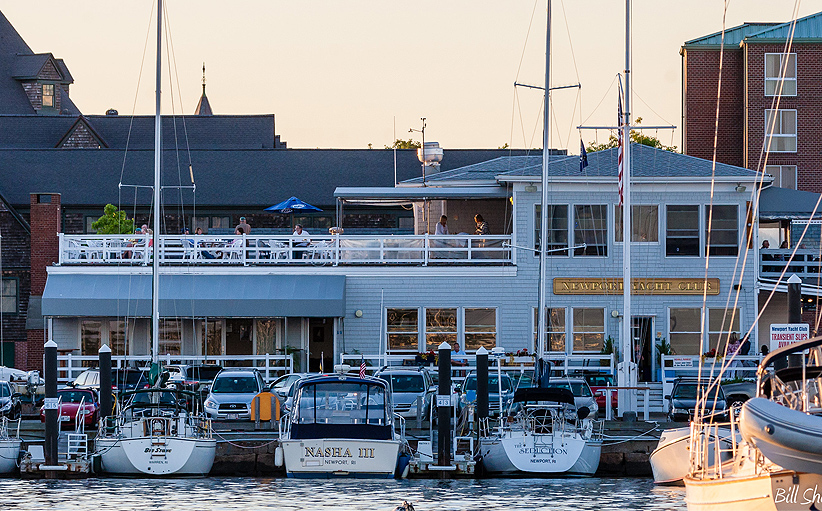
110 Long Wharf Mall, Newport, RI
Situated at the heart of Newport’s historic waterfront, the Newport Yacht Club offers a perfect blend of tradition and modernity. With its relaxed atmosphere, the club provides an inviting environment for boaters of all levels. Besides access to well-maintained facilities, members can enjoy a vibrant social calendar, sailing lessons, and competitive racing events. The club’s prime location also ensures easy access to Newport’s downtown attractions.
Ida Lewis Yacht Club
170 Wellington Ave, Newport, RI
Named after the legendary lighthouse keeper, the Ida Lewis Yacht Club offers a picturesque location on Lime Rock overlooking Newport Harbor. This family-oriented club boasts a range of amenities and a lively clubhouse. Known for its emphasis on junior sailing programs, the Ida Lewis Yacht Club nurtures a love for sailing among young enthusiasts.
Sail Newport
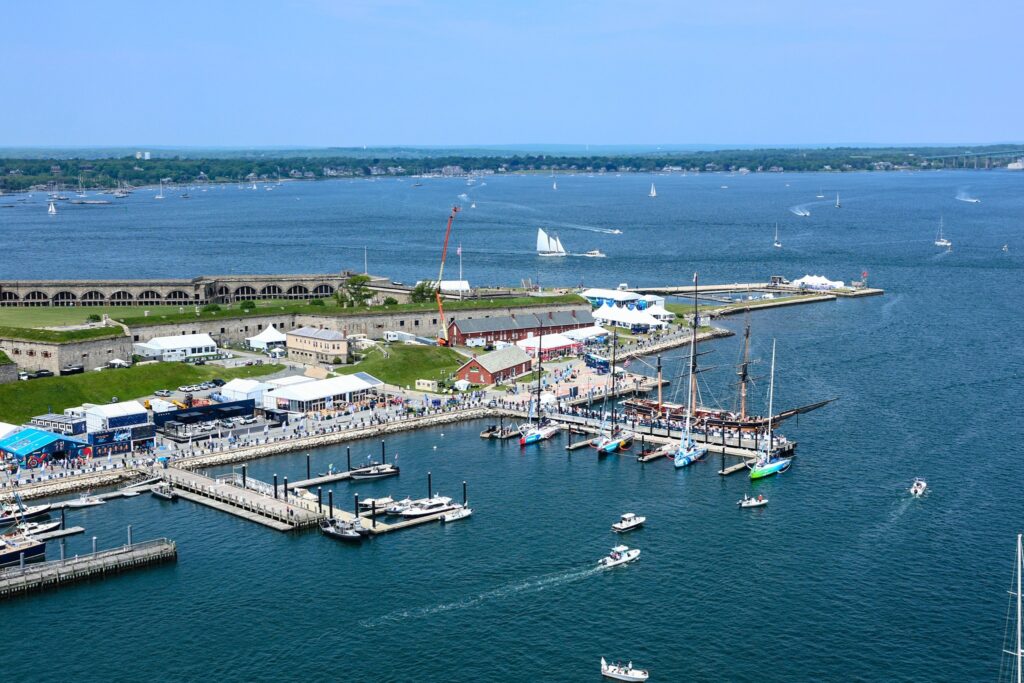
Fort Adams State Park, Newport, RI
As a community sailing center, Sail Newport focuses on accessibility and education. Located within the historic Fort Adams State Park, the club offers an array of programs suitable for all ages and skill levels. From sailing lessons and rentals to regattas, Sail Newport provides a dynamic platform for embracing the joy of sailing without the need for private membership.
Conanicut Yacht Club
40 Bay View Drive, Jamestown, RI
Just across the Newport Pell Bridge on Conanicut Island, the Conanicut Yacht Club offers a serene retreat with spectacular vistas of Narragansett Bay. Known for its welcoming atmosphere, the club provides an array of sailing activities, social events, and dining options. The junior sailing program is highly regarded, making it an excellent choice for families seeking to cultivate a love for sailing in their children.
Tiverton Yacht Club
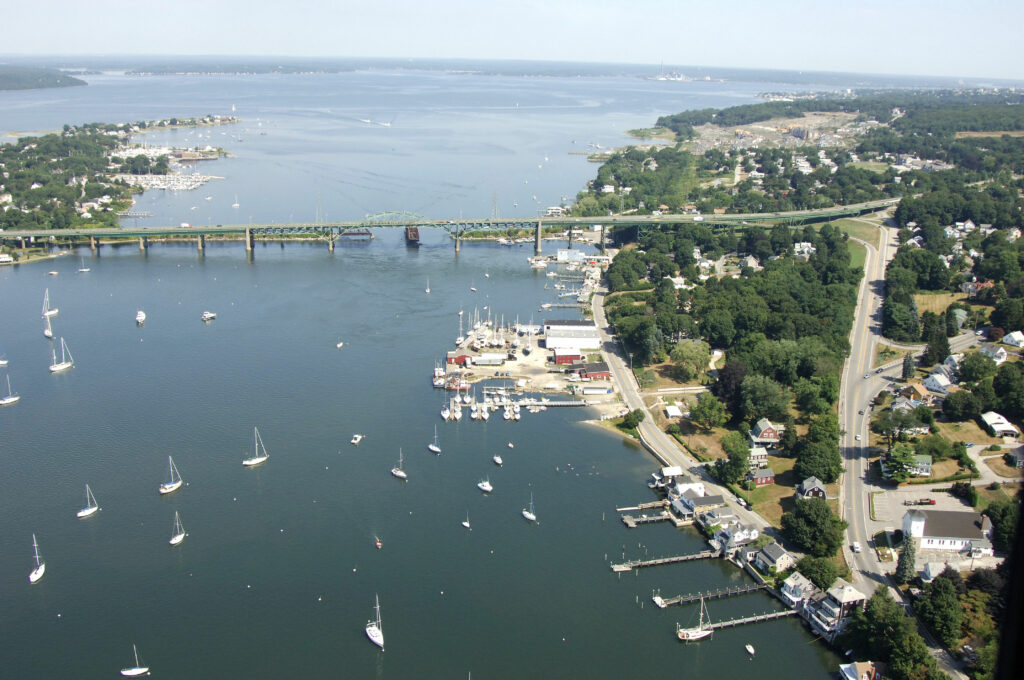
58 Riverside Dr, Tiverton, RI
Nestled along the picturesque shores of Tiverton, Rhode Island, this club provides a haven for both seasoned sailors and newcomers alike. Services and amenities include state-of-the-art marina facilities with well-maintained docks and slips, boat storage, and a well-stocked ship’s store for all your maritime needs. Members can enjoy access to clubhouse facilities, featuring waterfront dining, bar services, and event spaces for social gatherings. TYC’s robust program calendar offers sailing lessons, regattas, and races for sailors of all skill levels, fostering a vibrant community of passionate sailors.
Sakonnet Yacht Club
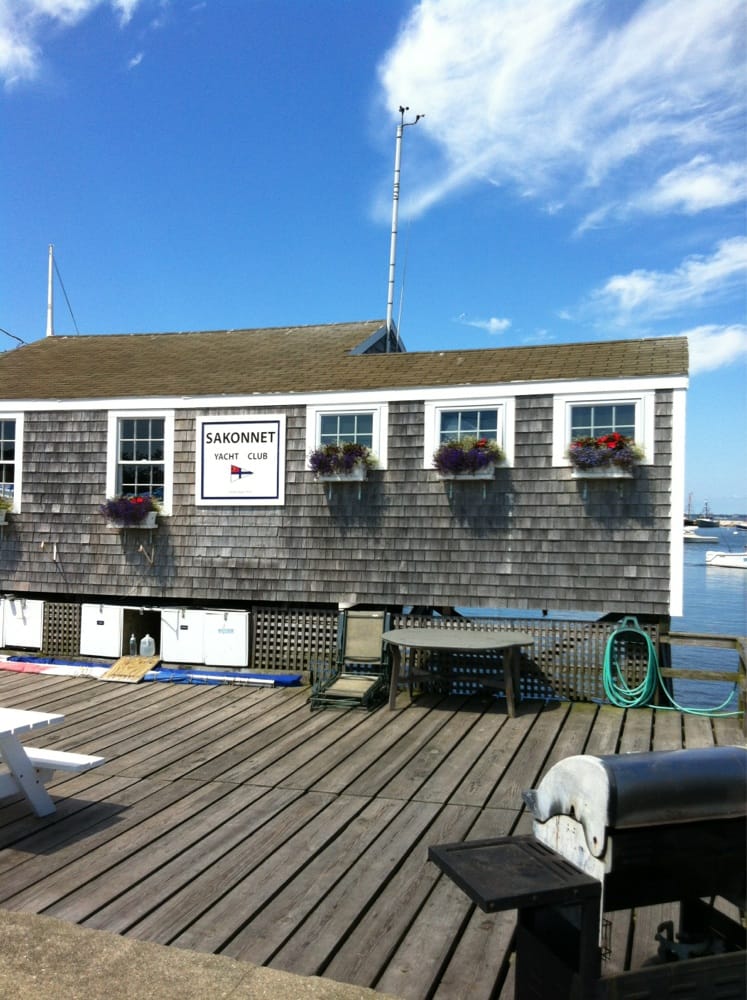
163 Sakonnet Point Rd, Little Compton, RI
Sakonnet Yacht Club, situated on the scenic shores of the Sakonnet River, provides well-maintained docks and moorings, a clubhouse with a restaurant serving delicious cuisine, and a bar overlooking the water, perfect for social gatherings and events. Sakonnet Yacht Club also hosts an array of programs, from sailing lessons for beginners to regattas and races for experienced sailors, fostering a vibrant maritime community that welcomes all ages and skill levels.
Newport County is a beacon for yachting enthusiasts with a wide array of yacht clubs catering to diverse tastes. Whether you’re a seasoned sailor or new to the sport, Newport County’s yacht clubs provide a range of experiences, from opulent and exclusive to community-oriented and accessible. The unique blend of history, culture, and maritime excellence ensures that any boating enthusiast can find a perfect haven for indulging in their passion. So, whether you’re navigating the competitive waters or seeking a tranquil escape, Newport’s yacht clubs invite you to embrace the allure of the sea in all its splendor.
Explore these other blogs posts about boating in Rhode Island:
- Best Boating Destinations around Newport, Rhode Island
- Everything You Need to Know About Rhode Island Boating Licenses
- Services for Boat Owners: From Maintenance to Meal Planning
- No Boat Taxes in Rhode Island? Yes, it’s true.
If you’re interested in buying or selling a property in Newport, RI or its surrounding communities, Hogan Associates Christie’s International Real Estate will gladly be your guide. Call us at (401) 680-6588 or send a message to [email protected].

COMMUNITIES
NEWPORT MIDDLETOWN PORTSMOUTH JAMESTOWN TIVERTON BRISTOL LITTLE COMPTON NORTH KINGSTOWN SOUTH KINGSTOWN NARRAGANSETT CHARLESTOWN
SEARCH LISTINGS MORTGAGE CALCULATOR
REQUEST VALUATION SELL WITH US
OUR COMPANY
ABOUT US READ OUR BLOG CONTACT US
© 2022 REAL ESTATE WEBMASTERS ALL RIGHTS RESERVED.
Sitemap • Privacy Policy

IDX information is provided exclusively for consumers’ personal, non-commercial use and may not be used for any purpose other than to identify prospective properties consumers may be interested in purchasing Information is deemed reliable but is not guaranteed. © 2022 State-Wide Multiple Listing Service. All rights reserved.
THE CUP THAT CHANGED EVERYTHING
The considerable advantage that the New York Yacht Club had exerted on the Cup since it first defended with a fleet of yachts on home waters in New York against the railway heir James Ashbury in 1870 was, by the 1960’s, beginning to erode. A memorandum in 1962 had declared that if multiple challenges were received within 30 days of a successful defence that they would be ‘received simultaneously.’ The fact that the Australians and British came to a gentleman’s agreement in 1964 precluded multiple challengers from entering that year and in 1967, despite a non-starting entry from the French, two rather mis-matched Australian boats vied for the challenger slot and only one, Dame Pattie, arrived in Newport.
Furthermore, the NYYC, so long the iron-fisted holder of the Cup and writer of the rules, adopted a stance via a memorandum on January 19 th 1970 that many commentators believe signed the America’s Cup to an inevitable destination – away from the New York Yacht Club. The memorandum clarified the protocol going forward and paved the way for multiple challenges to be accepted. And in 1970, the Cup world was all about to change with the emergence of one of the most colourful men in America’s Cup history – the French manufacturing tycoon Baron Marcel Bich – who kick-started the French involvement in the America’s Cup.
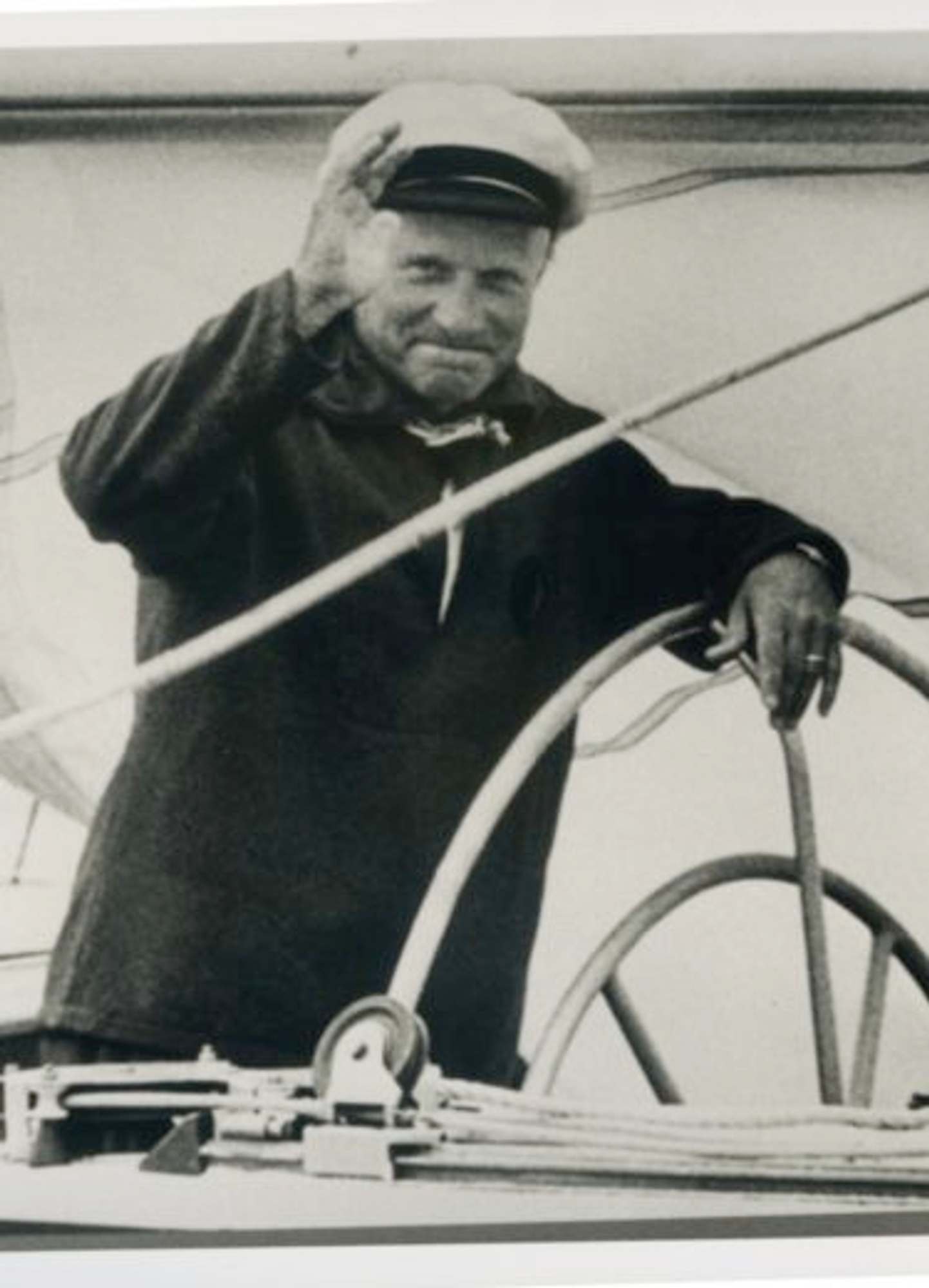
As soon as the 1967 regatta was concluded with the successful defence by Intrepid, no less than four challenges were received by the New York Yacht Club. Australia would be back with a renewed Sir Frank Packer campaign, meanwhile Great Britain and Greece tentatively threw their hat in the ring. But the real eye-catcher was the French who had sat out the 1967 event due to a perceived lack of experience but were busy buying up the 12 Meters (Kurrewa V, Constellation and Sovereign), commissioning Britton Chance for a side-project and setting up camp in Hyeres.
Baron Bic spent a reported $4m, a simply huge sum in 1970, with a commitment to bridging the experience gap to the Americans, Australians and British. He hired in Eric Tabarly, the undoubted star of French sailing whilst also bringing in 5.5 Meter Champion Louis Noverraz, 505 champion Jean-Marie le Guillou and Poppy Delfour one of the country’s top skippers. In Britton Chance he commissioned the American on a one-off basis to build an out-of-class 12 Meter called ‘Chanceggar’ in order to give appointed naval architect André Mauric, the son of a Marsellais cabinetmaker who had designed the fastest Starboat in the world at the time, a baseline of data from a modern 12 Meter. It was money-no-object, as well as being an almost party-scene in Newport with the enigmatic Baron setting up house at one of the grandest mansions on Bellevue Avenue, but acted as a huge boost to France’s participation in the America’s Cup.
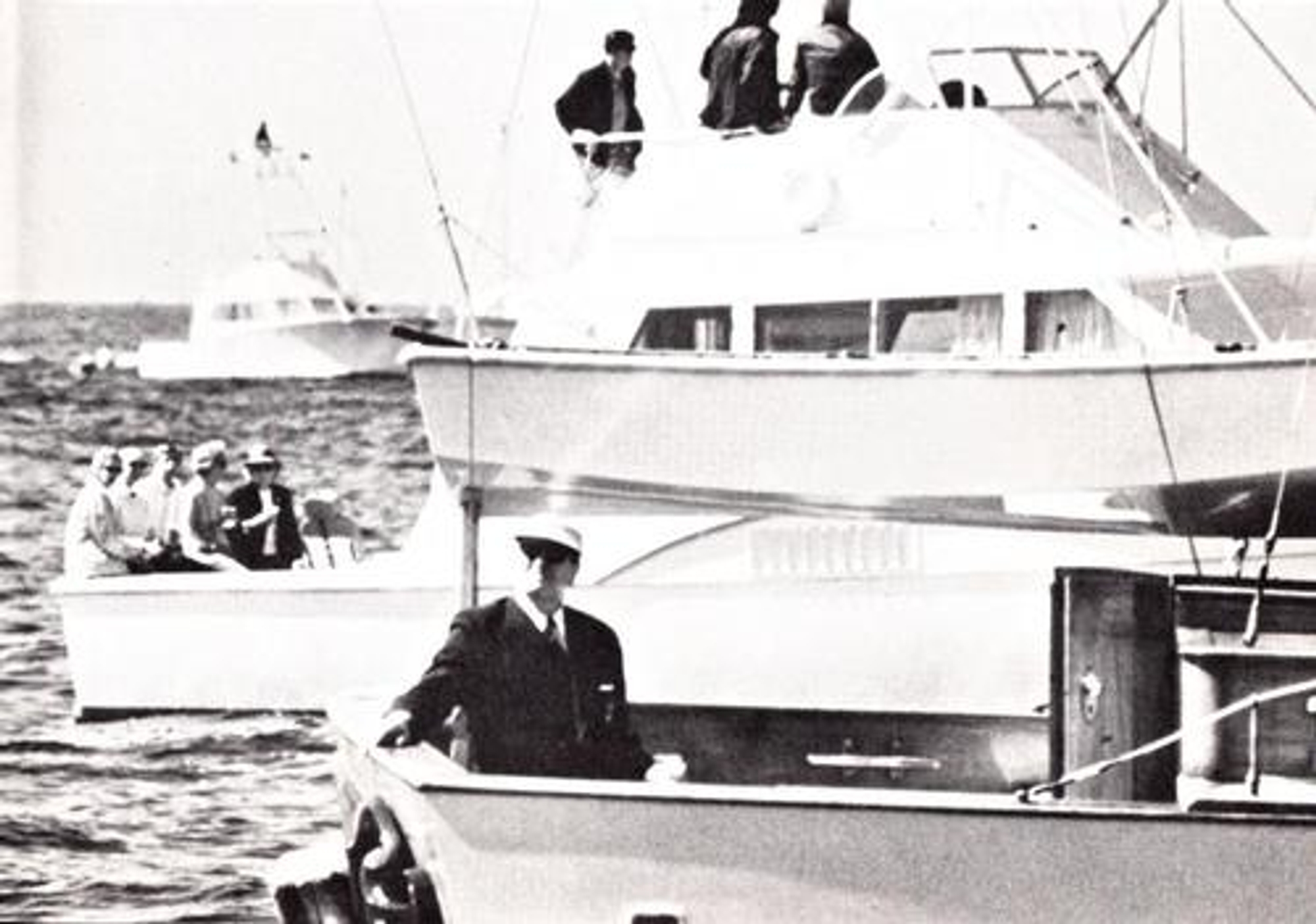
Whilst the French were getting immersed in their first campaign, the Australians under Sir Frank Packer had re-grouped and appointed Alan Payne as chief designer. Payne’s long experience by now in the Cup led him down an ever-more scientific path. Tank testing at Sydney University was now a far more technical approach with tools developed under the watchful eye of Payne whilst the introduction of wind tunnel testing on the rig produced some major advances that made the Americans, most notably Olin Stephens, sit up and take notice. Perhaps one of the biggest advances was discovered by Professor Peter Joubert, Payne’s good friend, who spent a day sailing with skipper Jim Hardy and realised that the greatest struggle for a skipper of a 12 Meter was visibility and being able to see both the genoa and the waves. This led to the implementation of the twin wheels that became ubiquitous on 12 Meters thereafter and was notably a feature on the American defender also in 1970. Gretel II as she was named, was everything that the original and much-modified Gretel was not. In the hands of Jim Hardy, this was an Australian challenge that had all the hallmarks of being one of the strongest challengers in Cup history.
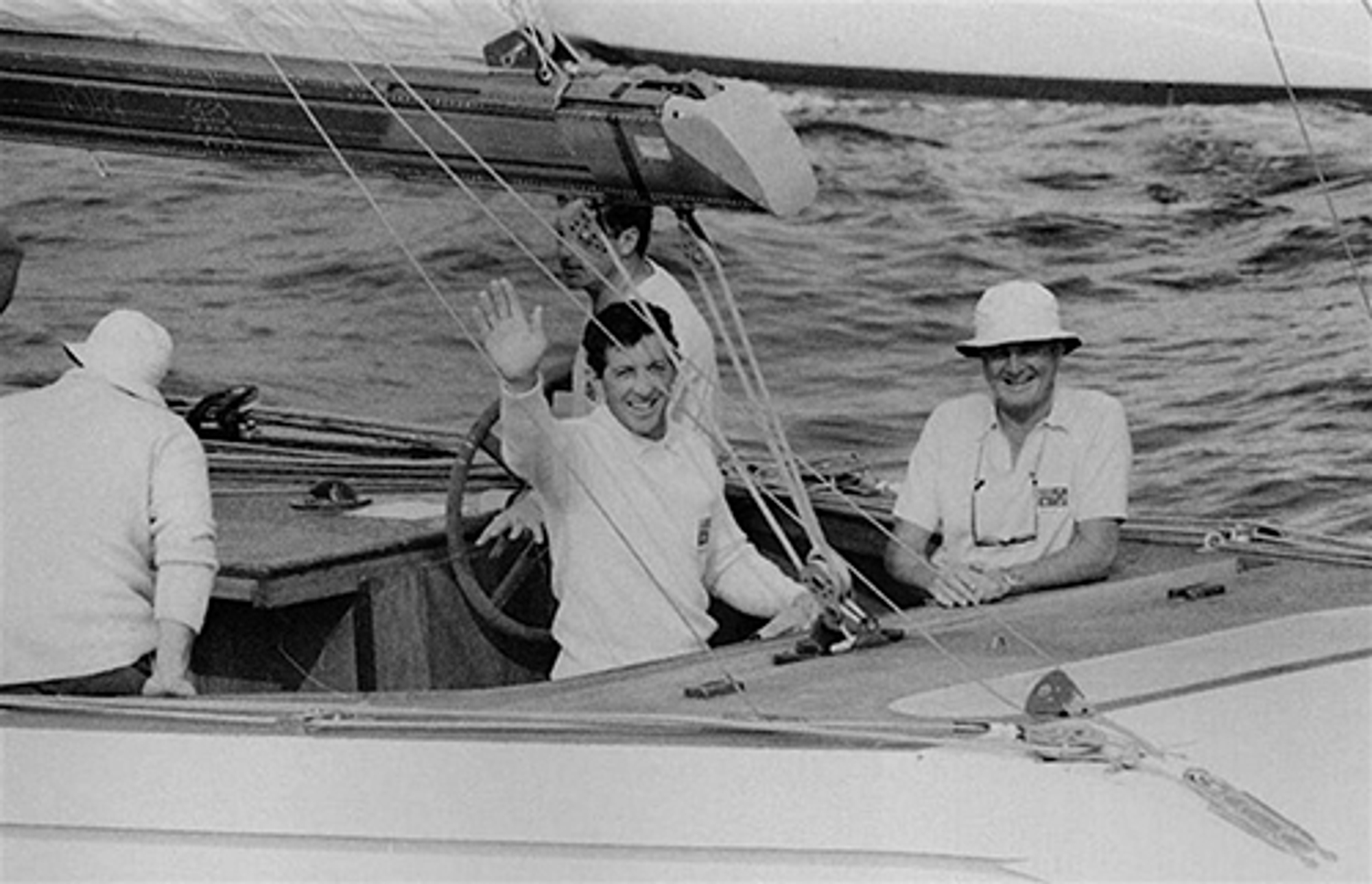
The French, however, were the first hurdle for Gretel II to overcome. Baron Bich’s syndicate built their 12 Meter across the border from the Egger Boatyard in Lake Neuchatel in order to meet the strict build nationality restrictions of the Cup, with French labour to Meuric’s lines but at launch, ‘France’ as she was named attracted derisory comments from the American, Britton Chance, who said: “France is a copy of my boat (referring to ‘Chanceggar’ that he had designed privately for Bich) with mistakes; the only changes they made are wrong.”
In the early challenger trials though, France looked a match for Gretel II, and with Louis Noverraz on the helm in a thrilling opening race, led all the way around only to fall into a wind hole on the last leg. Inexplicably, Bich replaced Noverraz on a whim and installed Poppy Delfour for race two which was held in desperately light airs that would have suited Noverraz perfectly being that he had grown-up sailing on the Swiss lakes.
Delfour lost the start and was some 200 yards astern at the top mark but in the fluky conditions, aced the run to the leeward mark and the French were leading before again being overtaken upwind leg. But in a repeat of the first lap, on the final downwind, as the wind shut down completely, Delfour managed to get France ahead again before a shrewd sail change from spinnaker to ultra-light genoa on Gretel II pulled her away, ghost-like, into an unassailable lead. True to form, Delfour was replaced on the spot by Bich in favour of Novarraz, adding to the chaotic shoreside presence that marked France’s first foray into the America’s Cup.

The change had little effect as the third race of the challenger series was held in heavy breeze that topped out at 29 knots and well out of the design range of France, affording the Australians who excelled as sailors in the breeze, a comfortable victory. But more drama was to come from the French following race three with the indomitable Bich sacking both of his helmsmen and then, dressed in a white double-breasted suit, white shirt, yacht club tie and white gloves replete with a white topped yachting cap, stylishly took the helm for the final race with Eric Tabarly beside him as navigator.
Quite why the gallant Baron chose to helm remains a source of speculation with some suggesting that he chose to grasp the story and take the blame of defeat (if there were to be any) and deflect criticism back home from his appointed skippers. Whatever the truth of the matter, Bich’s turn on the helm was somewhat of a ‘Catastrophe!’ as quoted in the French journal La Monde, with France getting lost circling in the Newport fog whilst Gretel II sailed the course and sealed the Challenger slot. France would be back and lessons of a haphazard but ultimately fun campaign that is burnished in the memory of all who witnessed it, were hard learnt.
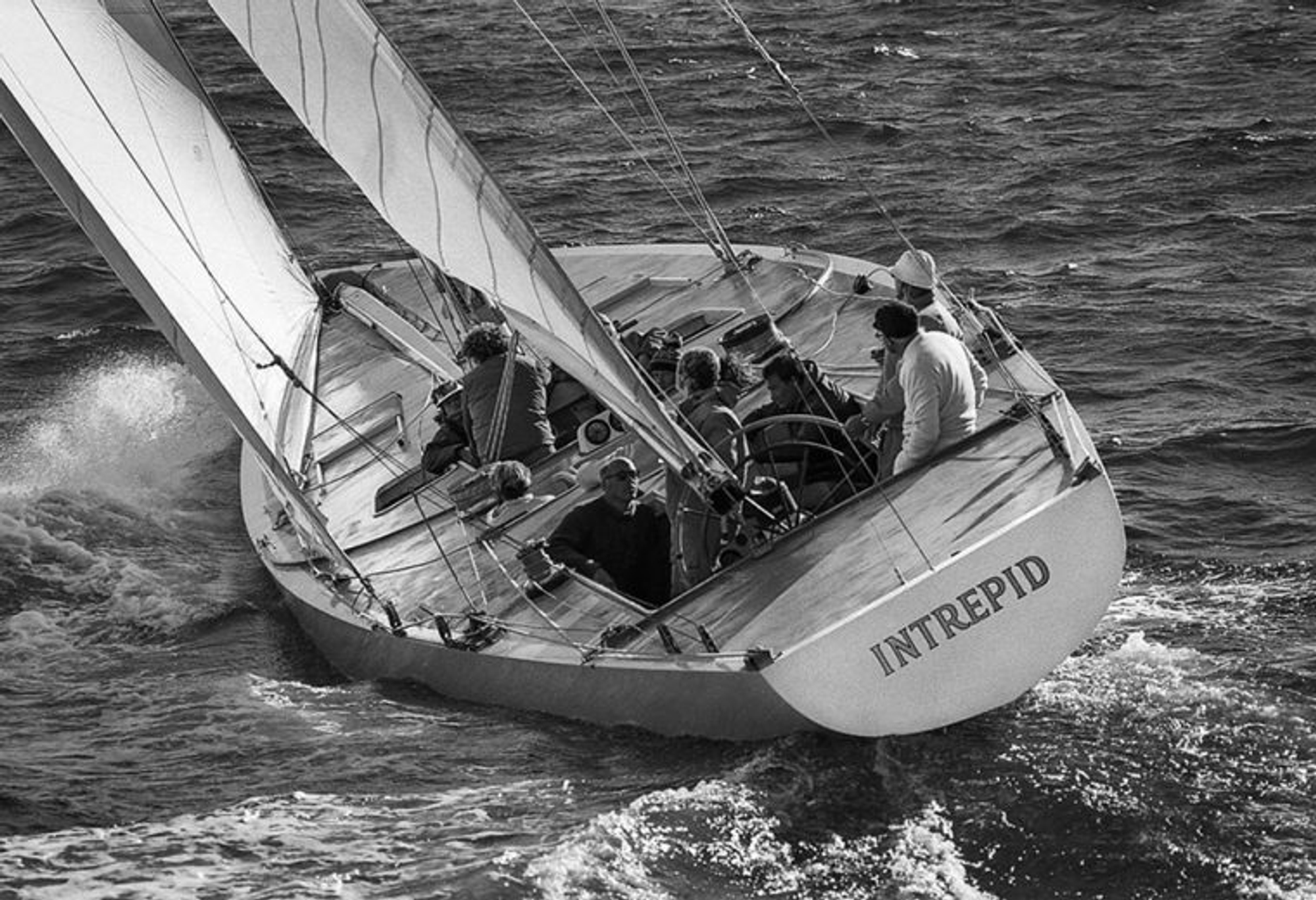
The New York Yacht Club meanwhile had high hopes pinned on its superstar designer Olin Stephens for a new yacht, ‘Valiant’, that was built to the order of vice commodore Robert McCullough. Britton Chance meanwhile was hired by William Strawbridge to update the all-conquering Intrepid from 1967 and both designers went to work tank-testing at the Stevens Institute in Hoboken. With so much confidence in Stephens, the expectation around Valiant was for another rocket-ship that would move the dial on yacht design once again.
Unfortunately, those hopes were mis-placed. Valiant was a difficult boat to steer and her trail wash was considerable. Stephens later lamented that the small-scale test runs in the tank threw up inconsistent data and highlighted, amongst other things, the design conclusions of the small-scale modelling that led to Charles Morgan’s beautifully adapted but ultimately slow ‘Heritage’ – one of the prettiest 12 Meters ever built. Chance however, had put together a programme with Bill Ficker as helmsman of Intrepid that was un-relentingly precise in its execution with every detail and every modification carefully considered, noted and assessed.
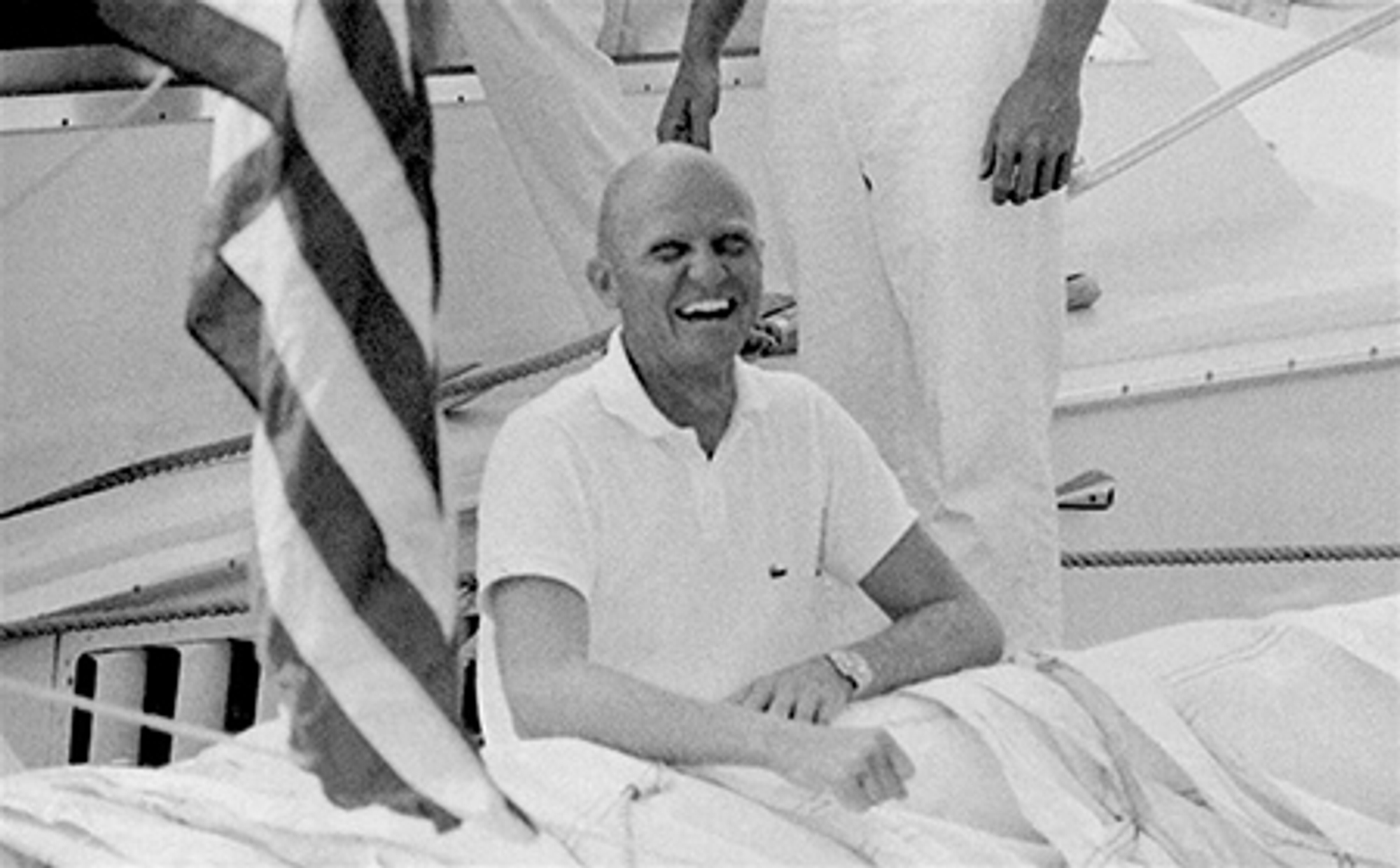
The American trials were a four-way affair with Valiant, Intrepid and Heritage joined by the much-upgraded Weatherly of 1958 with George Hinman on the wheel. In early trials, Valiant and Intrepid shared wins but easily dispatched Heritage. By the end of the first series Valiant was 5-3 up against Intrepid but the New York Yacht Club harboured grave doubts about Valiant’s straight-line speed and headed into the observation trials in July 1970 eyeing the possibility that Intrepid could be, once again, the yacht to defend the America’s Cup.
The NYYC Cruise regatta did little to enhance Valiant’s case after a race where she struggled to beat Heritage and a further race against Intrepid that saw her unable to point anywhere near as high off the line and suffered through manoeuvres. Immediately after the Annual Cruise, all the boats were sent for upgrades – some more dramatic than others with Heritage undergoing reconstructive surgery on her mast, keel and rudder whilst Weatherly tacked on a new mainsail. Intrepid, under the design of Britton Chance, opted to upgrade with wide fairing strips that led from the maximum beam mark all the way back to the rudder to lengthen the waterline.
When racing recommenced, it was what proved to be, a false dawn for Valiant who won the first race by a margin of 42 seconds against Intrepid and then went on to win races against Weatherly and Heritage. Intrepid dispatched the elder boats too in quick succession and it came down to a straight fight between Intrepid and Valiant for the defence slot. Bill Ficker aced the next six races, steering Intrepid to wins of greater and greater margins supported by an afterguard consisting of Steve Van Dyck as tactician and Peter Wilson as navigator who gelled in a variety of conditions and left the New York Yacht Club with no other choice. The 1970 America’s Cup Match would be Intrepid versus the hard-charging Gretel II and Newport was alive to the contest.
The racing certainly didn’t disappoint. Right from the first starting gun, the now established match-racing tactics of circling and trailing were much in evidence. Jim Hardy was fired up for the contest and the first protest flag of the series flew as the two boats bore away on opposite tacks in close quarter. Hardy seized the initiative and trailed hard on the stern of Intrepid and with 30 seconds to go, tacked off on a mis-timed run into the line. Bill Ficker held course on a perfect line and at the gun, Intrepid was at full speed.
It was a lead that she would never relinquish despite the race turning into something of a farce as it proceeded. First, Gretel II wrapped her kite around the forestay before snapping her spinnaker pole on the first hoist before being almost swamped by the wake of the spectator fleet following Intrepid. As the wash trundled down the deck, it flushed oil from the winches and in a dramatic moment, Paul Salmon the foredeck boss, was washed overboard meaning a return to collect him. It took two attempts to get him back onboard. Further calamity struck the Australians on the final leg as a US Destroyer and a Coast Guard crossed her path before the spectator fleet broke the imaginary boundary and entered the racecourse, causing the chop to increase severely. Gretel II finished the race some 5 minutes and 52 seconds astern of Intrepid with both syndicates complaining colourfully to the NYYC Committee Chairman Dev Barker. The Coast Guard was called in for a meeting and promised to do better. They held true to their word for the rest of the series.
Shoreside though, a number of protests were heard relating to the pre-start hunting that Jim Hardy had inflicted on Bill Ficker with many observers believing that the Australians had a very strong case being on starboard and with rights. However, the protest committee were having none of it and as Jim Hardy said afterwards: “We left the protest meeting like little boys who have just been lectured by their schoolmaster.” Two protests were summarily dismissed. The score was 1-0 to Intrepid.
Immediately after the race, Hardy called a meeting with an idea to install Martin Visser as the starting helmsman due to the fact that he had shown more aggressive tactics at close quarters in trial races. Sir Frank Packer and skipper Bill Fesq agreed, and Hardy would resume the helm position once clear of the line. It was a shrewd move by Hardy and in the second race, Visser stuck Gretel II expertly ahead and to leeward on the line in a classic match-race start that caused Intrepid to quickly tack away.
By the top mark, the Australians were in a commanding lead of almost two minutes but after two poor reaching legs found themselves astern at the leeward mark as mild fog crept across the racecourse. Now came a bizarre call from the NYYC Committee that was, it was later found, based on suspicion of outside assistance being accepted by the Australians. The Americans had noted several races in the challenger selection series against France where Gretel II seemed to uncannily be able to position themselves perfectly around the racecourse in fog and suspected that they were receiving course plots externally. The truth is that Bill Fesq had innovatively installed a doubled electronic system, set at right angles, from the UK nautical electronics firm Brookes & Gatehouse that gave an accurate dead-reckoning position, but the suspicion was intense amongst the Americans and the race was dramatically abandoned on the second upwind leg and the suspicions raged for years, decades even, afterwards.
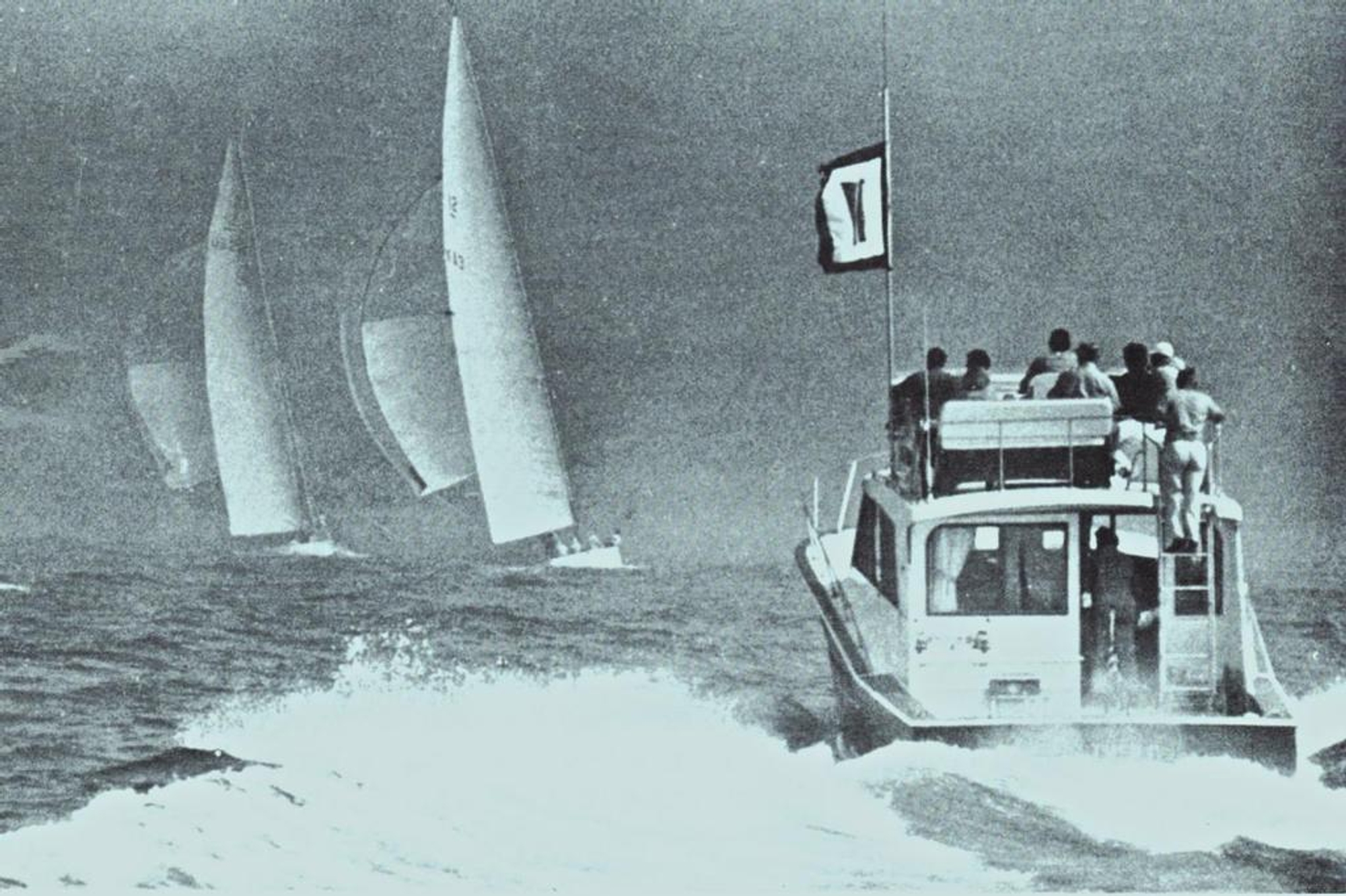
With an increasingly fraught backdrop enveloping the regatta of 1970, the re-run race two was to see a further souring of relations between the Australians and the Americans, centred around a pre-start foul that took aerial photographic evidence to eventually decide. However even before the starting sequence had begun, drama occurred on Intrepid as Steve Van Dyck, the American navigator was bitten by a ‘Yellow Jacket’ wasp and suffered a severe reaction so bad that he had to be taken to a tender and then airlifted by the US Coast Guard to hospital.
With the crew drama resolved, in light airs, and after considerable circling, both boats were coming in on the approaches to the start-line with Gretel II set up for a committee boat start and Intrepid seemingly trapped to windward. In the final seconds, Gretel II sought to shut out the Americans aggressively. However, the timing of Visser was arguably slightly adrift and in the desperately light airs, he struggled to get Gretel II’s momentum through the water enough to make the block. Bill Ficker, Intrepid’s helm spotted the gap emerging before him and with more speed effectively barged in at the committee boat only for Gretel II to respond with a slow luff that saw the two boats come together with the Australian bow glancing Intrepid just behind the shroud plate a few seconds after the starting gun had fired.
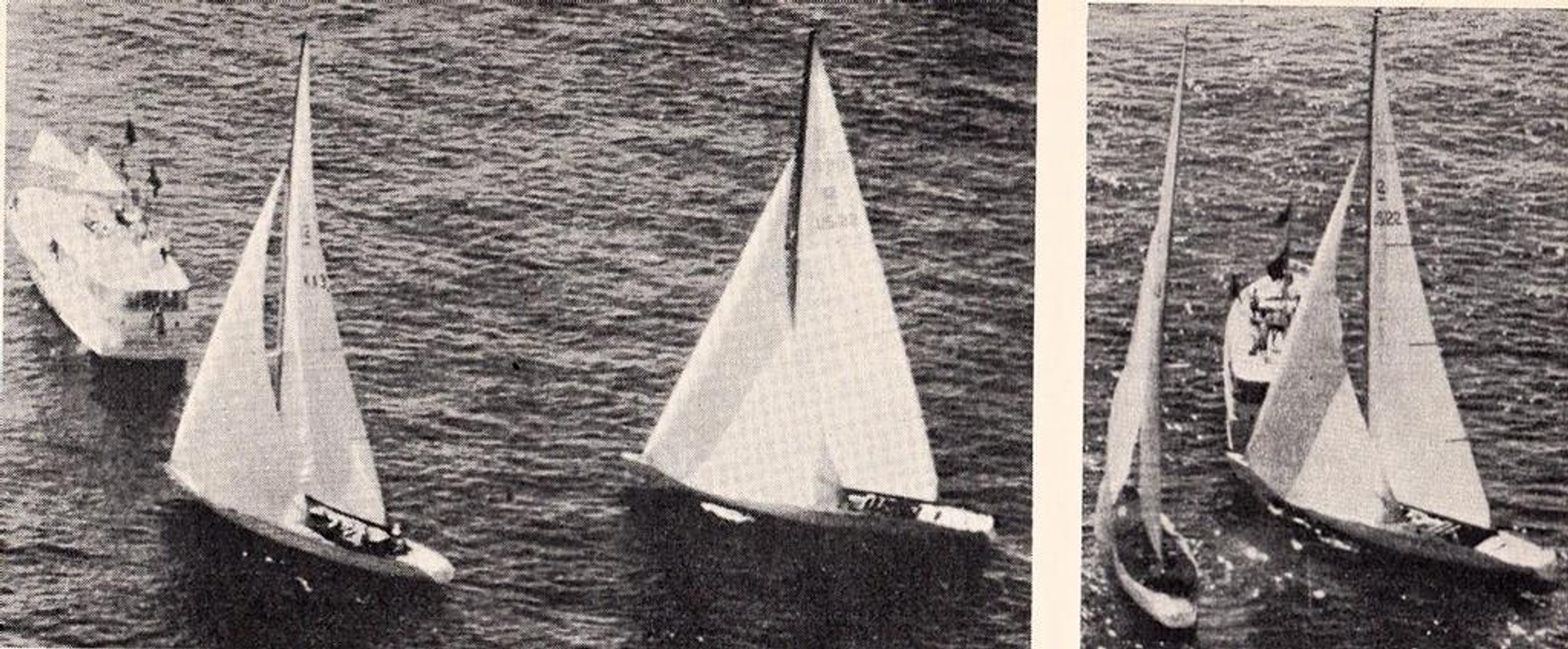
What followed was a fascinating light air duel whilst both boats carried protest flags. A 24-tack tacking duel ensued up the first windward leg with Intrepid emerging ahead at the top mark but good sailing downwind by David Forbes who assumed the helm for the offwind legs from Jim Hardy saw the gap close. On the next windward leg, with Hardy back on the helm, Gretel II closed again before handing back to Forbes to work his magic downwind. With a smaller spinnaker set perfectly, Gretel II passed Intrepid and led at the final leeward mark by over 100 yards. Hardy brought Gretel II home after a short tacking duel to score what looked like a fabulous win by 1 minute and 7 seconds, but the race was set to be decided in the protest room.
For all the world, the Australians felt that they had every chance of success in the protest room and still to this day, many of the famous sailors who graced that campaign – including John Bertrand who was the jib trimmer of Gretel II and who went on to win the America’s Cup in 1983 – felt that Intrepid had barged in and had no rights. The protest committee however, received first a detailed explanation from Bill Ficker, an architect by profession, who presented not only precise prose outlining the American viewpoint but explicit and detailed drawings of the situation. Ficker’s presentation was ultimately amplified by the emergence of photographic evidence in the form of a series of stills that even showed the smoke emanating from the starting canon and the protest committee’s decision was swayed.
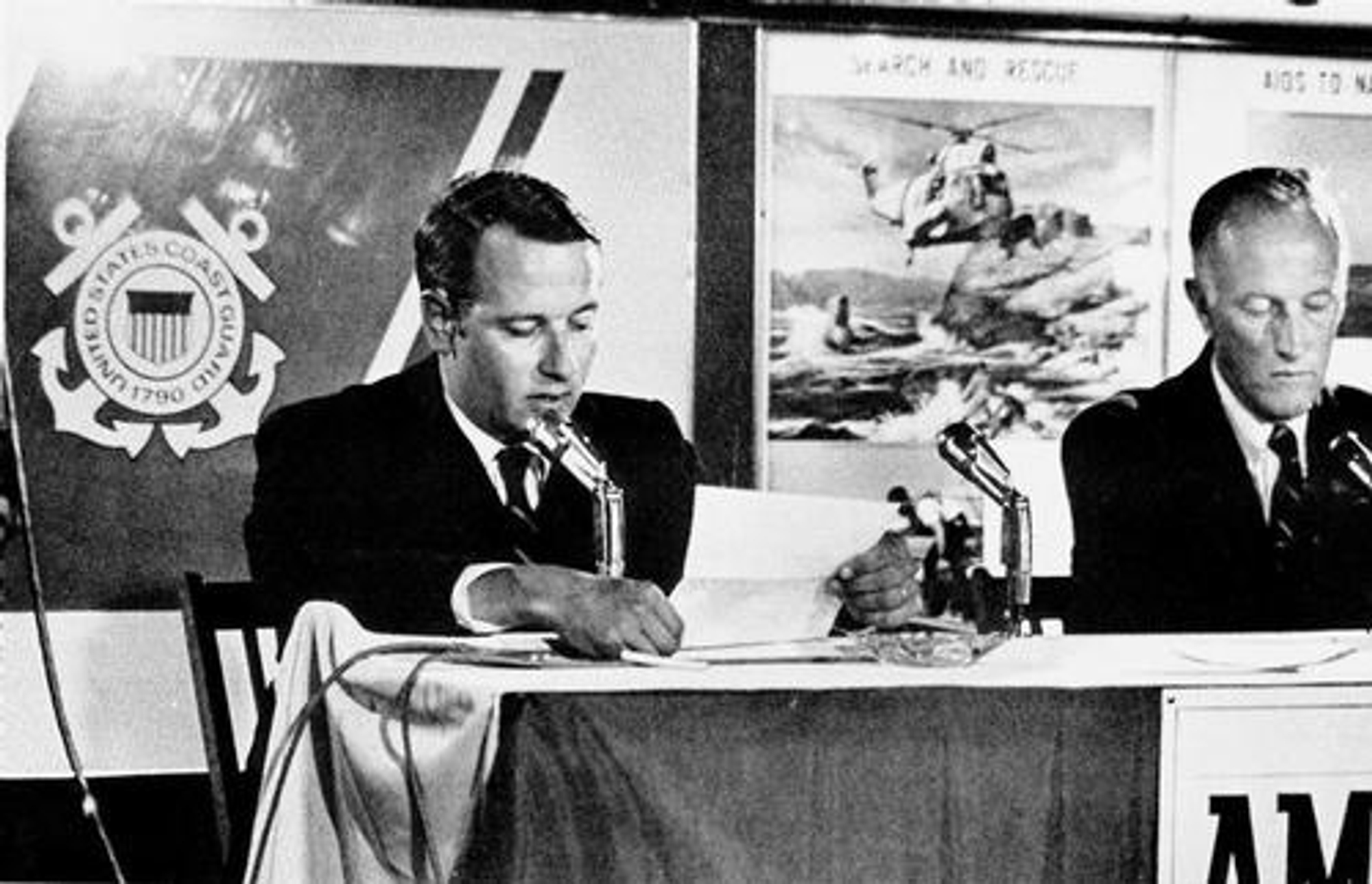
In effect what it boiled down to was an interpretation of when Gretel II was obliged to give room to Intrepid. Ficker argued that Rule 42.1 (e) of “not sailing past close-hauled after the starting gun and before the line,” had been violated by the Australians and after much deliberation, and with all the evidence presented, the committee agreed. It was 2-0 to the Americans and Sir Frank Packer was incandescent, calling for an immediate re-opening of the case and re-instatement of Gretel II’s win. It fell on deaf ears and a short response was issued by Devereux Barker III, Chairman of the Protest Committee, citing no new evidence being presented and therefore no reason to re-open the case.
The Australians remained furious at the decision but recognising that they not only had to win against a yacht but also against a hometown protest committee (despite the presence on the committee of a non NYYC member in Gregg Bemis), Jim Hardy re-assumed the helm for race three to quieten down the aggressive starting practices of Visser. It proved to be a mistake as Ficker seized the advantage in the pre-start and then pushed Gretel II over the line early. Whilst both boats were over, Intrepid was in a better position to duck away and come back onto the wind with even more speed. With Hardy having to duck right away, Intrepid was off to the races and in a choppy sea was never headed but never really extended. The final delta proved to be almost the time that the Australians had lost at the start – 1 minute and 18 seconds. It was 3-0 to the Americans and match point.
What race three had shown however, was that Gretel II was a match for Intrepid in anything under the mid-range conditions and the Australians, with an afterguard of stellar sailors, was a match for the Americans. Newport denizens and seasoned American commentators were still uncomfortable about the destiny of the America’s Cup and their worst fears were confirmed in race four.
On an atypical Newport day with the wind clocking and backing through a 15-degree arc, Bill Ficker took the decision to try and close out the regatta through a run-and-hide strategy, refusing to engage with the Australians and only mildly responding to a tacking duel once ahead. The American skippers’ tactic though was found out rather cruelly on the final leg, in a rapidly dying breeze, and with a lead of over a minute as a 90-degree shift filtered across the course, favouring the Australians who had spent the race closing the gap down to just 100 yards and who now seized the lead for a fraught final leg to the committee boat finish line. Despite rolling the dice with a clever positional move, the shift never came back for Intrepid, and the Americans were beaten by 1 minute and 2 seconds. It was Sir Frank Packer’s second clean victory in the America’s Cup and a cause for much celebration in Newport that night.
The repercussions though of the race two disqualification sat uneasily on Jim Hardy’s mind and following consultation with the likes of the designer Bruce Kirby and the established authority on yacht racing rules, Gerald Sambrooke-Sturgess in London, Hardy convinced Sir Frank Packer to try and re-open the case on appeal. It was shut down curtly by the New York Yacht Club once again and the boats emerged on the 28 th September 1970 for what would prove to be a thrilling final race of the series.
Race five was held in a shifting, light northerly airflow, conditions well-suited to the Australian design of Alan Payne that was regarded as a faster boat in the lower ranges. Jim Hardy won the start convincingly and, with pace, quickly stretched into a commanding lead of some 200 yards. With no other option, Intrepid had to try and force an error and instigated a tacking duel with Bill Ficker in phase with the shifts to such a degree that he reeled the Australians back at an alarming pace. In the final approaches to the top mark, the Americans seized the lead, powering over the top of Gretel II as she attempted a lee-bow position to leeward and perfectly on the layline. It was the slam-dunk move that forced the Australians to put in a short two-tacks to get round the mark and handed Intrepid a 150-yard lead down the two reaches.
The second upwind leg was a thriller however, with a big windshift that briefly put the Australians ahead before abating and coming back to Intrepid. The gap had narrowed to just 100 yards by the second windward mark and was further narrowed down the final run with Gretel II closing to within 30 yards but as the boats came into the last leeward mark, a persistent windshift filtered across the Newport racecourse turning the beat to the finish into a fetch and Intrepid maintained station to record a 4-1 series victory.
Australia were left smarting about ‘what could have been’ and in Gretel II they knew that they had the boat to beat the Americans in typical Newport conditions. Intrepid was victorious due to its remarkable skipper in Bill Ficker, enhanced by a crew that was drilled to military standards, and supported by key decisions going their way.
From the outside it was an easy, and almost certainly false, suggestion to make that the New York Yacht Club was in some way biased but Sir Frank Packer left a memorable quote that stayed long after the 1970 series: “Protesting to the New York Yacht Club is like complaining to your mother-in-law about your wife.”
Join in a tradition of philanthropy that began more than a century ago.
Find out more
These buildings represent so much to American history, and to adventurers everywhere who have sailed the open seas.
William Mathews Brooks (Chair Emeritus, New York Yacht Club Foundation)
NYYC Foundation
Founded in 2007, the mission of the New York Yacht Club Foundation is maintaining and restoring the New York Yacht Club’s magnificent Clubhouses on 44th Street in Manhattan and at Harbour Court in Newport, Rhode Island. Through tax-deductible contributions and donations, the Foundation grants funds for the Club’s important, ongoing capital projects in New York and Newport. “Preserving our past, safeguarding our future” is the goal of the NYYC Foundation.
Our Clubhouses
The “stations” of the New York Yacht Club are located in the heart of Midtown Manhattan, and at Harbour Court in Newport, Rhode Island, overlooking the historic waters of Brenton Cove and Narragansett Bay.
40° 43′ 50.1960” N and 73° 56′ 6.8712” W
44th Street, New York, NY
37 West 44th Street New York, NY 10036
41° 29′ 26.0808” N and 71° 18′ 36.7056” W
Harbour Court, Newport, RI
5 Halidon Ave, Newport, RI 02840
GET TO KNOW OUR
Upcoming & past projects.
See all projects
Restoring and Reforming the Formal Garden
Almost a century after Natalie Bayard Brown first wandered along the bluestone pathways of her beloved Formal Garden at Harbour Court, by the spring of 2018 the harsh New England weather had taken its toll: the paths, steps and fieldstone walls were crumbling and restoration work was needed.
Shedding New Light on the Palm Café
Architect Whitney Warren created an aura of French “café society” when conceiving the curved, glass-conservatory design of the iconic room on 44th Street known as the Palm Café.
Clear Windows Upon the City
First impressions are always the most lasting, which is certainly the case with the New York Yacht Club’s incomparable Clubhouse on 44th Street, the defining feature of which are the 149 windows that grace the façade. But windows, of course, don’t last forever, and after 120 years those in Manhattan require serious attention.
A “Face Lift” at Harbour Court
In 2012, the distinctive stucco-and-limestone frontage of Harbour Court—originally completed in 1905—was deteriorating almost literally before Club members' eyes.
CONSIDER MAKING A
Over the next decade, with important work either completed, in the planning stages or under way at Harbour Court or 44th Street, there are multiple projects that require major funding to ensure that the Clubhouses are preserved for future generations. These efforts—including a seawall to rebuild and a boathouse to restore at Harbour Court—and the ongoing annual maintenance of these historic buildings are made possible by the New York Yacht Club Foundation and your generous support.
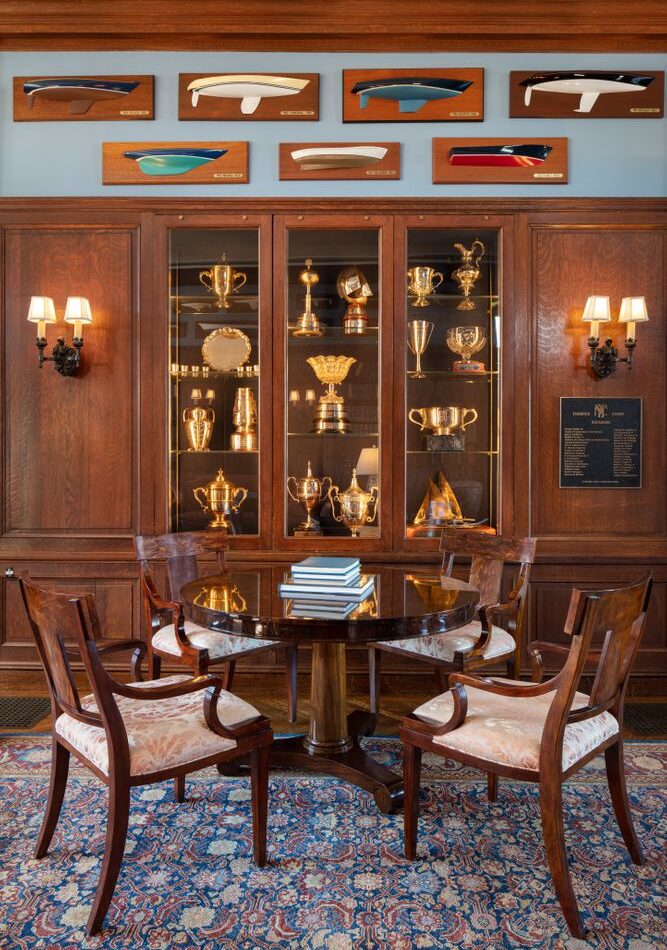
A MESSAGE FROM THE
Board of directors.
For over a century, a long line of generous donors and philanthropists have played a central role in conserving and restoring the Club’s extraordinary buildings and grounds. Today, this important work is carried on by the New York Yacht Club Foundation, and you are invited to join in their vital, ongoing mission.
The Club and the Foundation are the stewards of a pair of matchless architectural jewels. In many ways, the Foundation’s current calling is continuing the NYYC’s philanthropic legacy that was originally launched by Commodore J. Pierpont Morgan, who in 1897 donated the Midtown property on which the 44 th Street clubhouse was erected.
To maintain such a treasured historical icon’s façade and interior in the style and finish that it deserves requires long-term planning and significant financial support, which is provided directly through donations to the New York Yacht Club Foundation.
If the 44 th Street clubhouse, with its famous, unsurpassed Model Room, offers members a spiritual connection to the seas, the Newport “station” at Harbour Court is their literal gateway to blue water. Together, these buildings forge a meaningful connection between the New York Yacht Club’s past, present and future.
For more information or assistance with making a contribution, please contact the Foundation by calling 401-608-1125 or [email protected] .
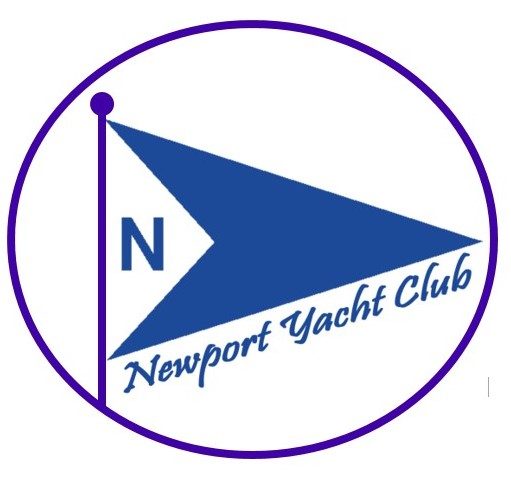
About Us » Club History
Newport Yacht Club was organized in 1936 through the efforts of the late Oscar Kuolt and several others. Its charter as a membership corporation under New York State law clearly stated ..its purpose: “To promote the sport of small boat sailing and small boat racing.” Its first location was on Newport Island, just across the Massuag Coves from the present location. Pilings from the old docks can still be seen during periods of low water. In the fall of 1943, Newport moved to the site of the Birds and Worms Hotel, which is now our clubhouse. The Snipe was the first class raced at Newport. This class has grown with the club and for some years Newport’s Snipe fleet has been one of the largest and most active in the country. The Lightning fleet was added in 1946, organized by Tom Sulivan, Gene Senn, and Bill Struab, with Dr. McIntoch as crew. This fleet has also become one of the largest in its class in the country. In 1953 the Comets and Lightnings of the Algonquin Yacht Club joined Newport, having been flooded from their previous home. Then the Snipe fleet from the Nine Mile Point Yacht Club joined our ranks, and several Jolly Boat owners were members for a few years beginning in 1957. In 1976 the Laser Fleet was added and in 1992 the club added Optimist Dinghies for the Junior Sailing program. With a $5,000 grant and a $20,000 loan from the Small Business Administration and with much hard work by the members, a new sea wall was built in the summer of 1973. The peak water level the following spring was one foot below the top of the new sea wall and well over the top of the old one. A club house renovation program began in 1977-78. In the fall of 1985, the Irondequoit Bay Outlet Bridge was removed, opening the bay to boat traffic onto Lake Ontario. This caused a permanent change to activity on the Bay from that experienced by Newport sailors for the previous fifty years. In response to changing conditions, club members raised funds to build two 120 foot piers for the Lightnings, permanent haul-outs along the sea wall for the Snipes, and substantially upgraded the club’s Committee boat and markset boats. Currently, the Club membership enjoys sailing both on the Bay or on the Lake making the decision unique to each of the fleets as well as based on the weather and boat traffic conditions. In the mid 1990’s the Club started admitting non-one design boat owners in order to make use of vacant dock space. A Cruising fleet was formally established in 1999. 2019-01-16
Newport Yacht Club 694 Seneca Road Rochester, New York 14622
©2010-2024 Newport Yacht Club
Columbia University in the City of New York
Miriam and ira d. wallach art gallery.
- Visitor Information
- Exhibitions
- Publications
Moscow: City, Spectacle, Capital of Photography
April 30–june 21, 2003.
Moscow: City, Spectacle, Capital of Photography , an exhibition of 20th-century photographs of Moscow, opens at Columbia University's Miriam and Ira D. Wallach Art Gallery on Wednesday, April 30, 2003 and remains on display through Saturday, June 21, 2003.
Moscow has been a powerful magnet for many Russian photographers of the 20th century. Moscow: City, Spectacle, Capital of Photography presents the work of 31 photographers, whose images have defined the visual experience of Moscow from the 1920s to the present. Diverse in form and strategy, the 90 photographs chosen for the exhibition trace the history of Russian documentary photography and offer insight into individual practices. From Aleksandr Rodchenko's constructivist visions and Evgenii Khaldei's humanist landscapes to Igor Moukhin's scenes of urban spectacle and alienation in the works of Russia's key 20th-century photographers, Moscow ventures beyond the expected image as a site of famous landmarks, architectural treasures and dramatic lifestyles.
Early 20th-century photographers Boris Ignatovich and Arkadii Shaikhet saw themselves in the vanguard of an emerging mass-media culture, defining with their cameras the visual experience of Soviet modernity. For nearly 70 years, Soviet photography was assigned the duty of maintaining the ideological rigidity of the Soviet State. Yet, as examples of the work of Iakov Khalip, Anatolii Egorov, Mikhail Savin, and Mark Markov-Grinberg show, Soviet photographic practices were much more complex than has been previously acknowledged. The works of these photographers remain intensely compelling to a modernist eye.
Contemporary Russian photographers, such as Lev Melikhov, Valerii Stigneev and Sergei Leontiev, engage with the legacy of the Soviet documentary photography. But for them the documentary is a complex and multivalent genre, which incorporates subjectivity, ambiguity and reflexivity and comments on social and cultural issues without losing sight of the position from which that commentary is made. In the recent photographs by Vladimir Kupriyanov, Igor Moukhin, Anna Gorunova and Pakito Infante, the "real" space of Moscow is replaced by an imaginary and optical spaces of virtuality.
The works in the exhibition are on loan from Moscow's Cultural Center Dom, and many are being shown outside Russia for the first time. In conjunction with the exhibition, the Wallach Art Gallery is publishing an illustrated catalogue with a scholarly essay by the exhibition curator, Nadia Michoustina, a Ph.D. candidate in Columbia University's Department of Slavic Languages. The essay presents a nuanced history of Russian photography of the 20th century, and contributes to an interpretation of extraordinary images.
City life: Moscow
With a resurrected trainline, a high-concept park, edgy art spaces and changing attitudes, in moscow old and new are starting to dance — and it's a fascinating show to watch.

A wind orchestra plays in the small park beside Red Square
Inside the moodily lit Moskovsky Bar in the Four Seasons hotel, Ilya, the barman, is making me a Moscow Mule. It's a quiet evening and the ground-floor watering hole is almost empty, but Ilya is performing with a panache that suggests an audience. In goes the vodka with an arc of the arm, lifting the bottle like a ballerina in flight. The ginger beer is added with a splash. Then, like a magician unveiling an assistant who, it transpires, has not been sawn in half, he reveals the secret ingredient: kvas, the Russian version of coca cola, glugged from St Petersburg to Vladivostok in the Soviet era. The final touch has come from just as far. "The ice is from Lake Baikal, in Siberia," he tells me, producing a cube the size of a brick. As he hands me the copper mug I half expect him to say "ta-dah!"
I take the cocktail from him, noticing his tattoos as I do so. Snakes coil their way around his wrist, poking out from underneath his crisp white shirt. For a moment, they throw me, seeming to posit this cool cat of a cocktail maker in Shoreditch, Brooklyn, Kreuzberg or some other hip area of a city that has embraced the 21st century. Not in the Russian capital, where, some might argue, the 20th century is still alive and glowering.
Outside, Moscow is keeping up appearances. Two minutes walk south west, the soldiers who protect the Tomb of the Unknown Soldier — the monument dedicated to Russia's dead from the Second World War — are ending the day in a choreographed march back to barracks. Above them, the wall of the Kremlin looms. Behind this stark red barrier, the lights are on in the Senate building where the Russian president has his office. There's rain on the breeze, and the city is lost in a gloom redolent of Bond films and Le Carré novels. Back in Moskovsky Bar, Ilya reaches for the apricot brandy and asks: "How about a Pavlovan Mystery?" There'll be no frosty relations tonight. At least, not in here.
Despite its old-fashioned elements, however, in Moscow old and new are starting to dance — and it's fascinating to watch the show. On a Saturday morning I glimpse their faltering steps, their unsure foxtrot. It's 22 April, Lenin's birthday and a fortuitous time to be in Red Square. A crowd of well-wishers has congregated at the revolutionary icon's tomb to mark the anniversary. The red flags of the Russian Communist Party are waved in the misty air. Three elderly gentlemen, stooped and frail, are assisted by a son or daughter towards the tomb. Adjacent on the slippery cobbles, millennial Moscow looks on in bemusement and then passes by. There are selfies to be taken, smartphone conversations to be had and trainers to be bought in GUM, a department store that faces the mausoleum. Mirroring the trio of septuagenarian soldiers saluting their hero, metres away three teenage girls skip through the shop's giant entrance, arms linked, giggling in unison.
But it's too simplistic to say that Russia in 2017 is witnessing a schism between yesterday and tomorrow. Moscow is being pulled slowly and subtly in all manner of directions — by financial changes; by a glacial infrastructure overhaul; by cultural undercurrents; by the motion of youth and social media. Each tugs at the moorings of tradition, politics and ingrained attitudes. The process isn't tearing the city apart, but it's certainly stretching the stitches.
Some of the signs are obvious. Moya Ulitsa ('My Street') is an ambitious, overdue programme that began in 2014 to remove the city's electrical cables from overhead pylons and bury them beneath the pavement. In a metropolis of 13 million residents, it has only added to the traffic chaos — jams are constant. Some of the gridlock has been eased by the resurrection of the Moscow Central Circle, a 34-mile ring railway line around the centre. It was initially constructed in 1908, closed to passengers in 1934, and reconfigured as a fast commuter service last September. Travellers can ride it to Delovoy Tsentr station and the Moscow City business district, an image of 'new Russia', where buildings like the 1,227ft-tall Federation Tower scratch at the heavens.
A mile south west of the Kremlin, the Cathedral of Christ the Saviour encapsulates Russia waltzing between old and new. It was originally built between 1839 and 1883 in thanks for Russia's deliverance from Napoleon, but was obliterated by dynamite on Stalin's orders in 1931, in the epoch of state atheism. Its replacement was built between 1990 and 2000 under the more benevolent eyes of Mikhail Gorbachev and Boris Yeltsin, a looming giant of white walls and gold domes that admires its reflection in the River Moskva.
And yet, though a child in years, the cathedral belongs to a Russia of unflinching centuries. It was here, on 21 February 2012, that the all-female rock band Pussy Riot played a guerilla gig, an act of political defiance aimed at Vladimir Putin that would see three of its members tried on charges of hooliganism motivated by religious hatred, and jailed for nearly two years in the harshest case. Watch the YouTube video of the incident and it appears utterly innocuous, but standing in the same vast space on a Saturday lunchtime, I'm suddenly not surprised that it provoked such a severe response. This cathedral represents the Russia of fervent Orthodox faith and extreme devotion. Elaborate mosaics and frescoes adorn the walls. The aroma of incense floats on the air. Women in headscarves rub tirelessly at brass candle stands, quietly angered by the wax that drips from burning wicks.
It's beautiful but stifling, an improbable context for protest, and I feel the need to flee to the roof, where an observation deck offers views of a shapeshifting conurbation. Moscow City is visible in the distance, but the past is also swarthily insistent. In the distance I spy the Seven Sisters, the septet of colossal gothic skyscrapers, commissioned by Stalin between 1947 and 1953 and an inalienable part of the Moscow skyline. They are magnificent in size and scope, serving as (among other things) Moscow State University, the five-star Hotel Ukraina and its luxury sibling the Hotel Leningradskaya. But with clouds gathering behind them, they also resemble hands clawing their way up from a grave.
Going underground The sense of a Russia braced against dissent is amplified by a ride south-west on the tube. The Moscow metro is a masterpiece, surely the planet's most spectacular subterranean transit system, but it pledges visual allegiance to the Soviet straitjacket. Park Kultury station, on Line 1, is a Stalinist celebration of Russian prowess, the concourse between its platforms peppered with marble statues of godlike youths, carved between 1931 and 1935: gorgeous boys reading literature, aspiring actors performing, athletic girls triumphing at tennis. It was carved out between 1931 and 1935, and does not seem too concerned that the world has moved on.
But a defiant flame flickers above ground. At first glance, Gorky Park — Moscow's prime green enclave — would seem to toe the party line as well, named after Russian literary giant and Stalin's favourite author Maxim Gorky, and featuring an enormous seven-archway entrance that booms with Soviet grandeur. The year 1955 is imprinted on its facade next to Lenin's face.
Yet inside, the Garage Museum of Contemporary Art is a clever question mark, probing at the fabric of the society around it. Its moniker is a red herring, referring to the former bus depot in which it was originally housed. It now occupies the shell of the Vremena Goda ('seasons of the year') restaurant, the park's culinary focal point in the Soviet decades. A mosaic of a female autumn clad in orange still adorns the main hall. The whole gallery, in fact, might be an act of misdirection, showcasing art that could be considered critical of the status quo, yet which wraps its barbs in ambiguity. 'Numbers', a 2015 work by the 28-year-old Chechen artist Aslan Gaisumov examines the destruction of his home city of Grozny by Russian forces in 1999. It reconstructs a street via the silent device of fixing salvaged house numbers — one to 99 — to a board. The reasons for the gaps' placement, in a pattern that approximates a mouth of broken teeth, are left to your interpretation. Similarly, photos by Anastasia Bogomolova capture the bleak mundanity of life in the city of Bakal (1,000 miles east of Moscow), without explicitly stating that it was born out of slavery, the site of one of Stalin's Gulags from 1941 to 1943.
Russia's left field is also identifiable two miles east of the Kremlin at Winzavod, another contemporary art hub cocooned in a onetime brewery and wine factory. Travelling to find it feels like a journey beneath the city's skin. Line 5 of the metro goes both above and below ground, surfacing next to Kurskaya railway station, from which drab armies of carriages trundle off in search of Moscow's southern suburbs. Further on, it passes through narrow roads lined with warehouses and splattered with graffiti. The gallery is entirely at home in this post-industrial realm. Since 2007, its brick outhouses have displayed the work of many of the country's brightest young visionaries and will continue to do so this summer via its Farewell to Eternal Youth exhibition. Video artist Evgeny Granilschikov will take centre stage until 16 July, and sculptor Irina Korina will come into focus for two months from 15 August. Both will enjoy audiences larger than you might expect of so scuffed a location. Hidden in the corner of the compound, diner-drinkery Kraftwerk is testament to Winzavod's popularity. A chalkboard behind the bar lists 29 beers, with titles as evocative as Red Sonya and Fucking Perfect. A DJ booth promises loud, late nights. I ask the waitress dashing between tables what time it closes. "We're open until our last customer leaves," she says with a shrug that suggests she is used to lengthy shifts.
A fragment of a less introverted, more expressive Russia? Maybe. And maybe Zaryadye Park, Moscow's current big creative project, is part of the same thing. Here is a flight of fantasy — a green lung. Due for completion in 2018, the space will incorporate everything from ecological zones that represent the flora of the Russian landscape to an orchestral concert hall and a half-bridge made from glass that will jut partially out over the Moskva River. That this will be the first new park in Moscow in 50 years is remarkable. That it's being crafted to the blueprint of Diller Scofidio + Renfro, the New York design team who created Manhattan's iconic High Line walkway, is even more so. That this place of public promenade will sit directly next door to the Kremlin, on the footprint of the demolished Rossiya Hotel, the 3,000-room kraken that became an emblem of squat Soviet sixties architecture, seems almost impossible to conceive.
"Part of the idea is to open up the city for pedestrians," Timur Bashkaev, one of the architects responsible for the interiors of some of Zaryadye's futuristic buildings, tells me as we examine a scale model of the site at his office in the shadow of Christ the Saviour. "People will walk out of Red Square and into the park. It will alter the centre."
Later that day I take a stroll to inspect it, peering over wooden barricades to spy on the work in progress. All around, 20-something Muscovites are scurrying into the dusk, aiming for the shops of the Okhotny Ryad mall, a retail temple wedded to American capitalism with such enthusiasm that it offers Dunkin' Donuts. But around the corner, guards are still statuesque at the Tomb of the Unknown Soldier, Mother Russia watching her children, uncertain where the future will carry them.
Getting there & around British Airways flies direct from Heathrow to Moscow's Domodedovo Airport, which lies 26 miles south east of the city centre. Russian national carrier Aeroflot serves Heathrow and Gatwick from Sheremetyevo Airport, 18 miles north west of the Kremlin. The Moscow Metro covers the city in depth and, including the Moscow Central Circle, it incorporates 15 lines, 245 miles of track and 237 stations. Single journeys are R55 (75p). The Aeroexpress aeroexpress.ru train service links Sheremetyevo and Domodedovo airports to the centre (the Belorussky and Paveletsky train terminals respectively), from R420 (£5.75) one way.
When to go The Russian winter can be notoriously fierce, but Moscow can hit temperatures of 23C in July and August. September, with average temperatures of around 16C, is also an ideal month to visit.
Places mentioned Bolshoi Theatre Cathedral of Christ the Saviour Four Seasons hotel Garage Museum GUM Kraftwerk Kremlin Museum Winzavod
More info visitrussia.org.uk
How to do it Steppes Travel , a Russia specialist, offers five-day breaks at the Four Seasons hotel, B&B, from £1,975 per person, including British Airways flights, a private guide, transfers and visa assistance.
Follow @LeadbeaterChris
Published in the Jul/Aug 2017 issue of National Geographic Traveller (UK)
- Travel and Adventure
TheBetterVacation.com
Everything about tourist attractions
Golf holidays in Russia, Moscow

Historically tourists have been holidaying in Russia for numerous reasons – to enjoy nature, to relish the Russian wildlife, to take in its varied history, to show off their winter sports skills etc.
However, in recent times one more reason to visit Russia has become popular – to play Golf.
Believe it or not, but the first Russian 18-hole Golf course was built in the suburban area of Nakhabino, Moscow in 1994.
Moscow Golf and Country Club remained the only 18-hole Golf course in the country for many years.
Since then many more Golf courses have been added and today, Golf holidays in Russia is one of the country’s biggest tourist attractions.
So book yourself a Golfing vacation in Russia and have the experience of a lifetime.
Best time for Golf holidays in Russia
Russia is one of the largest countries in the world and the weather varies from one part of the country to the other drastically.
Some parts of Russia get extreme weather, and it is not possible to play Golf all through the year.
Thankfully, the main Golf courses are in and around Moscow. Apart from long and bitter winters, Moscow enjoys mostly pleasant warm weather.
Winter is from the beginning of November until the end of March. It is best to avoid Golf tours to Russia during these months.
Golfing season in Russia begins from April and goes on until October.
Autumn lasts for two months from September to October and these two months are the best for Golf holidays in Russia.
You can enjoy beautiful natural surroundings along with a great game of Golf.
Recommended Reading 1. Golf holidays in Thailand 2. Golf holidays in Vietnam

Best Golf courses in Russia
Russia has some of finest Golf courses in Eastern Europe.
1. Skolkovo Golf Club Course

Skolkovo Golf Club has one of the finest Golf course in Russia.
Legendary American Golfer Jack Nicklaus designed this Russian Golf course.
The sprawling greens at this course have many lakes and bunkers providing ample challenge to Golfers from all over the World.
2. Tseleevo Golf & Polo Club Course

Tseleevo Golf & Polo Club Course situated at picturesque forest area 42 km north from Moscow is another fine Russian course.
This was also designed by Jack Nicklaus in 2008.
In 2013, this course hosted the European Tour – when the prestigious tournament returned to Russia after five years.
This course also has a luxury Golf resort.
Besides Golf, this resort also has a ski slope, a polo club, a hunting club and luxurious amenities to help you unwind after a day outdoors.
3. Zavidovo PGA National Golf course
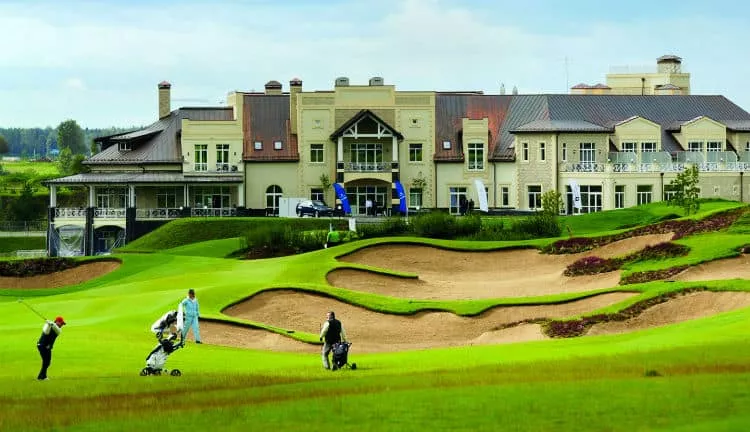
An hour’s drive from Moscow takes you to the Zavidovo PGA National Golf course .
Built with a traditional Scottish aesthetics, it offers good water challenges.
This is Russia’s first and only Golf course carrying the prestigious PGA title.
Recommended Reading 1. Golf holidays in Australia 2. Golf holidays in Dubai
4. Pestovo Golf Club Course

The Pestovo Golf Club Course is a world-class 18-hole course stretching 6,483 m (about 7,090 yards).
It has been specially designed to host major tournaments.
It has artificial obstacles which compensate for lack of scenic beauty.
It also offers a yacht club for entertainment and relaxation.
5. Moscow Country Club Course

The Moscow Country Club Course is the best-known Golf course in Russia.
Situated outside Moscow, it offers 300 acres of beautiful Golfing greens.
Half the holes here present a water challenge.
The signature is a 576-yard par five 5th.
This course deserves special mention, as it put Russia on the Golfing map of the world.
Balancing the water challenges are beautiful forest park-like views.
The greens and the clubhouses are all kept in excellent condition.
No doubt it is the favorite destination of the tourists who book Russian Golf packages.
Dunes Golf and Country Club is near St Petersburg, Russia’s cultural capital as well as its second largest city.
Other good Golf courses include the Moscow City Golf Club, Don Gold and Country Club, the Pirogovo Country Club and the Links National Golf Club.
Of these four Golf clubs, only the Links Club has an 18-hole course.
Sources # Golftripz.com # Europeantourdestinations.com # Yourgolftravel.com # Alercegolf.com The travel specialists at TheBetterVacation.com use only high-quality sources while researching & writing their articles. We make every attempt to keep our content current, reliable and trustworthy .
Recommended Reading 1. Golf holidays in Spain 2. Golf holidays in Croatia
How useful was this post?
Click on a star to rate it!
This article was researched & written by
Ishita Ganguly
She is a spontaneous traveler. She loves exploring peaceful and underrated tourist attractions, trying local cuisines, learning new languages, and visiting holy places. She finds traveling therapeutic, and whenever things go south, she packs up her bags and hits the road. She would love to travel solo across Europe one day. Favorite cities: Paris, Budapest, Venice, Adelaide.
Edited by Rekha Rajan & fact checked by Jamshed V Rajan
Leave a Comment Cancel reply
Save my name, email, and website in this browser for the next time I comment.
FireStorm Internet runs this website to provide the most accurate and up-to-day information about tourist attractions.
Our Address
FireStorm Internet, 203, 30C, Bollineni Hillside, Perumbakkam Main Road, Nookampalayam, Chennai, India. Pin Code: 600126
About Us The Team Contact Us Affiliate Disclaimer Content Policy HTML Sitemap Privacy Policy Terms of Service
Helicopter Tours Food Tours Ghost Tours Stadium Tours Hop On Hop Off Tours Zoo Tickets Madame Tussauds Linq High Roller Summit One Vanderbilt
© 2024 FireStorm Internet

17 Exciting Things to do in Moscow
Written By: Linda Voltaire
Updated On: December 21, 2022
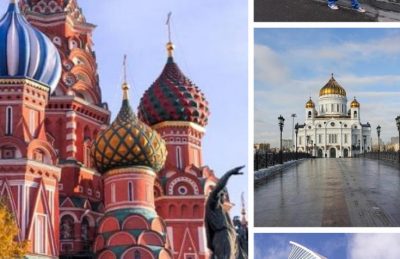
Visiting Russia? These are the top 17 things to do in Moscow to help you plan your trip.
If the western world has New York City , the first great metropolis on the eastern side of our planet is Moscow. A huge city with a complicated and impressive history, Moscow gets a bad rep over Russian politics – but that doesn’t make it any less impressive. Capital to the largest country in the world, Moscow takes the grandeur of its standing very seriously.
This is a place where luxury is king and where opulence takes a front seat in every aspect of life. The buildings are grand and imposing, the parks are luscious and enormous, and even the subway stations look different in Moscow than anywhere else in the world.
Table of Contents
Best Things to do in Moscow, Russia
Walking around Moscow is also going through the tumultuous history of the 20th century, which had Russia as one of its main protagonists. There are fascinating remains of these times everywhere in the former Soviet capital, from the gorgeous Seven Sisters skyscrapers to the Orthodox cathedrals that were closed for the better part of a century. Still, Moscow is also a completely modern city, with a vibrant social and party scene, incredible restaurants, and some of the most luxurious hotels in the world.
After living in Russia’s capital as an ex-pat for four years, I got the privilege to experience not only the main attractions in Moscow but also the everyday life in this huge city and quickly found my sweat spots off the beaten tracks! So here is my list of my top 17 things to do in this exciting metropolis!
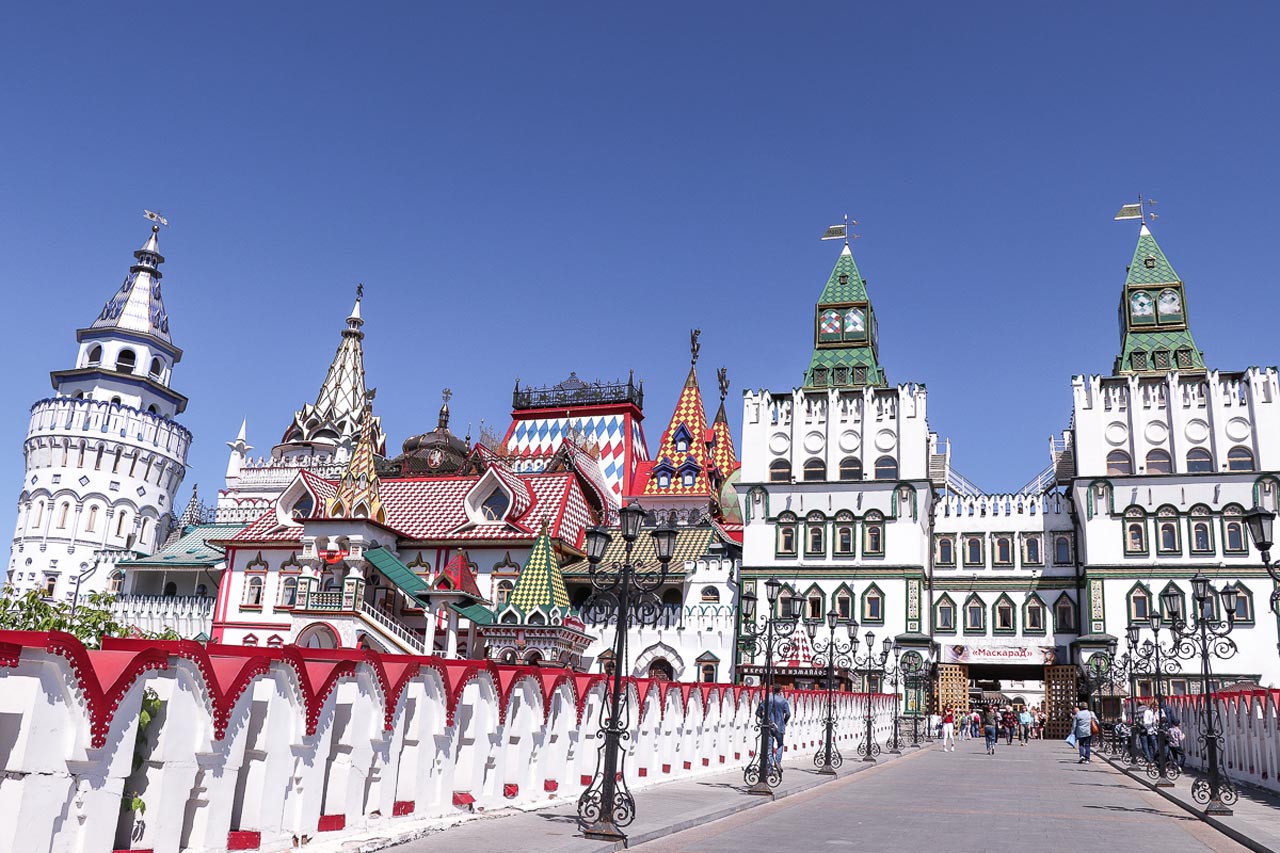
Attractions in Moscow
When visiting a famous city like this one, it’s a must to go through the most iconic landmarks first. Moscow has plenty of those, most of them in the center of the city, which is very well-planned for tourists.
1. The Red Square, Kremlin & Surrounding Area
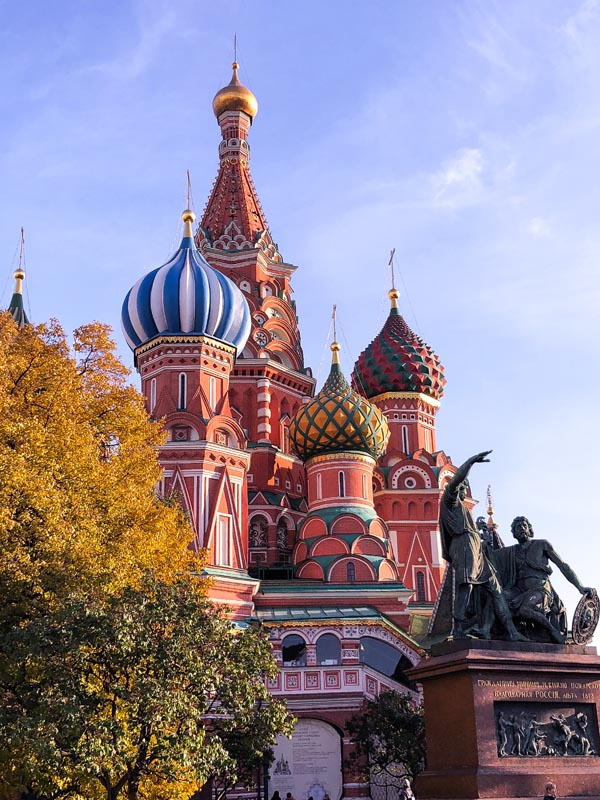
No place tells the story of Moscow’s power in the past century the way the Red Square does. This is where the biggest political meetings in the USSR occurred for many decades, and you can feel the power on each step.
Here, you’ll also find the historic museum at the entrance, showcasing the decades of history behind this iconic landmark. The Lenin Mausoleum, perhaps the most famous resting place in the world and home to the remains of the former communist leader, is also here.
On one side of the Red Square you’ll find the Kremlin, the fortified complex that now hosts the presidential residence. This is also home to the most iconic of all Moscovite landmarks: St. Basil’s Cathedral, a 16th-century marvel of colors. This is the best spot to take a selfie and show the world you’ve reached the Russian capital!
- Get your Kremlin Skip the Line Tickets and Kremlin tour here.
- Free cancellation up to 24-hours in advance of the tour.
2. Bolshoi Theatre
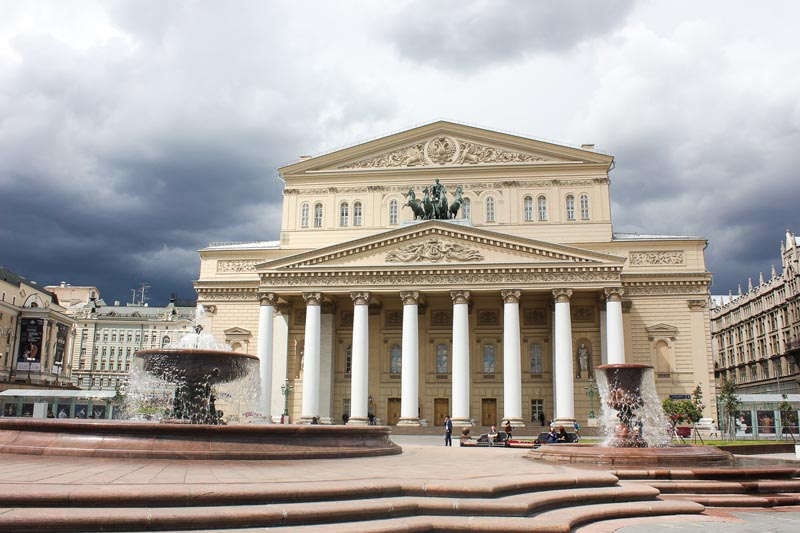
You can easily spend a couple of days just exploring the Moscovite city centre, and the Bolshoi Theatre should be your second stop. Walk past the Red Square and then head to the nearby Bolshoi Theatre, one of the oldest and most renowned houses of opera and ballet on Earth.
Visit for the impressive early 19th-century architecture, but if you’re seeing a ballet performance, make sure you book between 3 and 6 months in advance! I can strongly recommend this as it is a truly unique experience!
- Book a private 2-hour tour of the legendary Bolshoi Theatre.
- See the presidential box reserved for tzars, watch a rehearsal and skip the lines through a separate entrance.
- Free Cancellation up to 24-hours in advance.
3. Luxury Shopping at GUM and TSUM
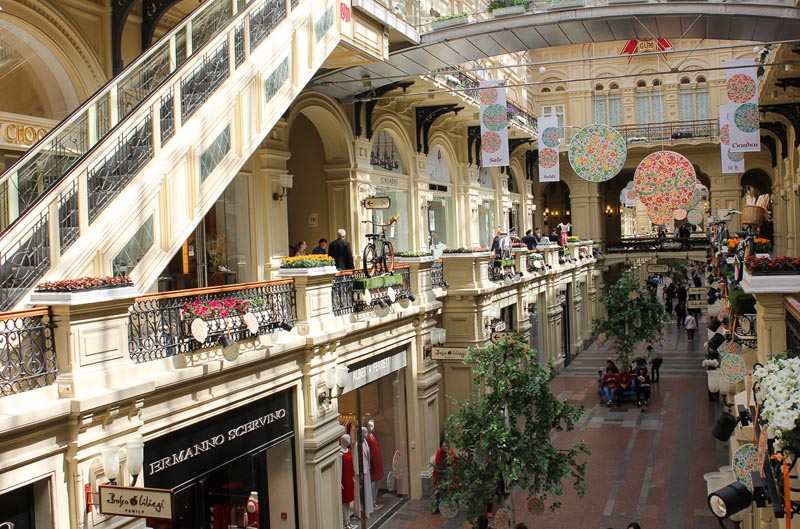
While many might think of Moscow as the sad place with the long bread queues from the USSR days, it’s been quite the capitalist haven for a while.
If you’re up for some shopping, you’ll find one of the biggest luxury malls in town, TSUM, right behind the Bolshoi and GUM, at the red square. GUM is the most famous department store in town, where you’ll find luxury everywhere and all high-end brand.
All in an imposing late 19th-century building with lots of history, worth a visit just for the design, its bridges and the glass roof even though you are not up for shopping!
4. Christ the Savior Cathedral
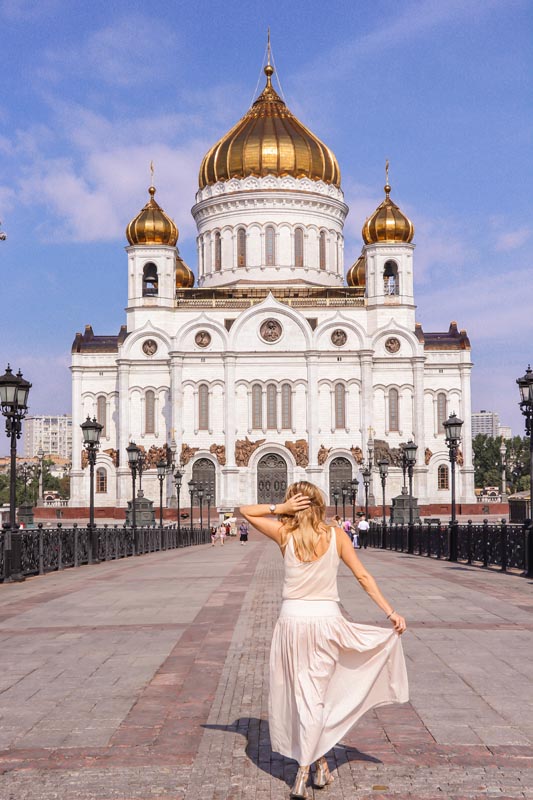
A newer addition to the gorgeous Moscovite cathedrals and my grandeur neighbor during my years in the city Don’t let the young age of this building fool you. After the perestroika in the early 90s, the newly revived Russian Orthodox Church received permission to build a cathedral on this site. They did the location honors and built the largest temple of the Christian Orthodox Church.
The façade is as grand as you’d expect, but it’s the inside that will mesmerize you, with its domes as tall as the skies in bright gold and gorgeous paintings and decor! Bring a shawl to cover your hair to adjust to the local tradition.
Head to the back of the cathedral and you will find one of the most photographed bridges in Moscow, the Patriarshiy Most. This is the perfect spot to get a good view and photo of the cathedral but also to see the Kreml and Gorky Park from a distance. Or why not just enjoy a moment watching the river and its boats!
- Get around Moscow with ease using the Hop On Hop Off boat and Bus ticket. 24, 48 or 72-hour tickets available.
5. Gorky Park
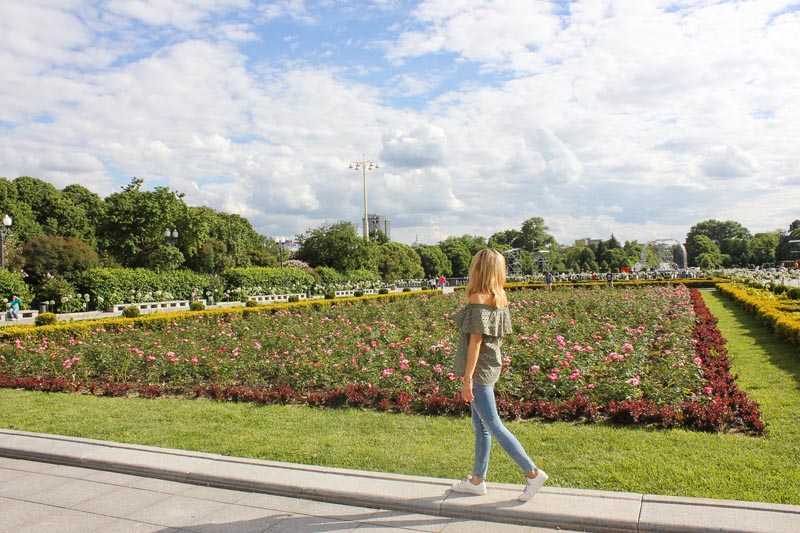
Cross the river and head to Gorky Park along the Moscow river. The most famous green area in town, similar to New York ’s Central Park and the weekend hangout for locals. There are many beautiful parks in the city, but if you’re only visiting for a few days, this is the unmissable one!
With fair attractions to entertain children, beautiful artificial lakes and gardens, and lots of outdoor activities, it’s a lovely place to relax. A place of rest in the middle of the metropolis. The area in front of the New Tretyakov Gallery & the Muzeon Park of Arts is actually one of my favorite oasis as a bit more quiet and peaceful than Gorky itself.
Why not spend some time in the museum to get a great tour of Russia’s history through art or just enjoy the art exhibition outside where local artists spend their weekends.
6. River Cruising
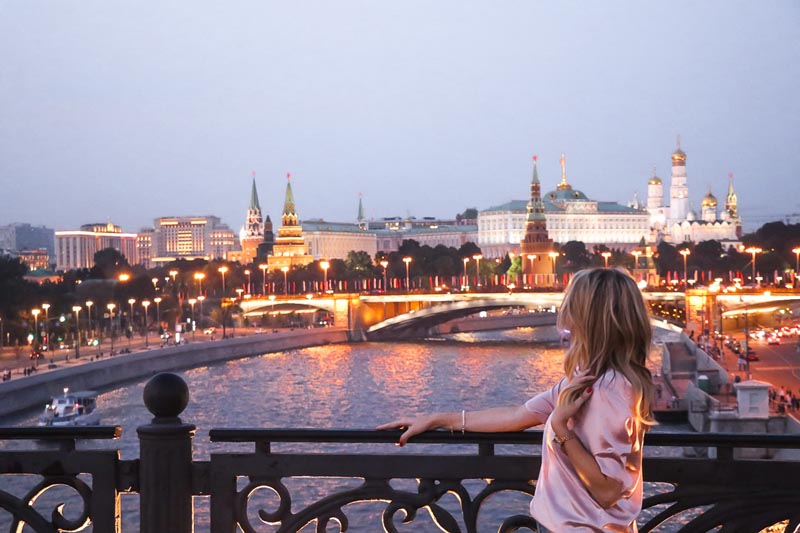
One of the best ways to experience Moscow is from the Moscow River. There are many stops for the boats and one is just next to Gorky Park. See the city from another perspective – and turn the ride into a romantic one by taking the evening cruise. Moscow is magic during the night.
If you’re looking for a truly luxurious experience, take the Radisson Blu cruise – or the Erwin for a delicious seafood dinner. Both stop at Gorky or at the luxury Radisson Royal Hotel, set in one of the Seven Sister’s skyscrapers.
- We use Get Your Guide when booking city tours and they offer a River Sightseeing Cruise seeing all the main tourist attractions in Moscow
7. Metro Hopping
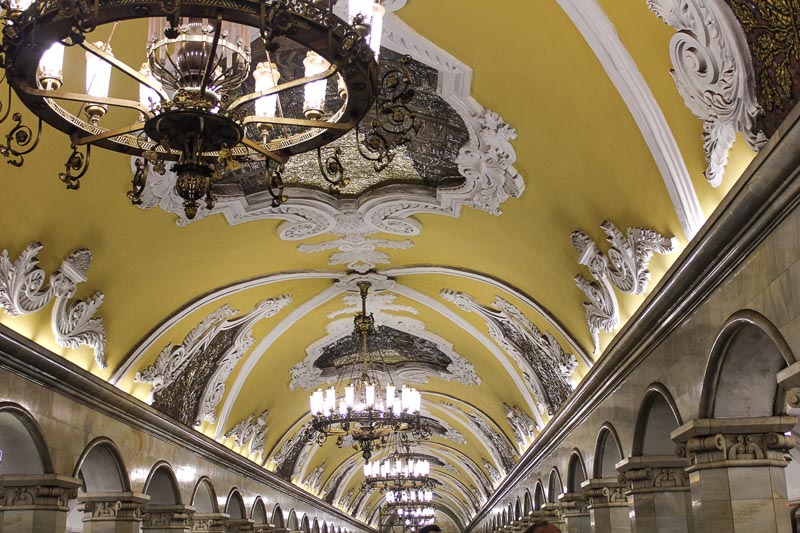
First inaugurated in the 1930s, the Moscow subway system is one of the oldest in the world, and certainly the most beautiful. Started under Stalinist times, each metro station is dedicated to grandeur and oozing personality.
Visiting the subway stops is an attraction in and of itself, and Komsomolskaya, Mayakovskaya, Kropotkinskaya are my favorites. Those surrounding the Red Square are also mesmerizing – in general, these are kind of like underground palaces.
Most of the signs at the Moscow Metro now have Latin letters, so it’s very easy to get around!Unfortunately, the trains are not as beautiful and pleasant as the stations but still, this is a true Moscow experience. Take a guided tour of the 9 most beautiful Metro Stations including the award-winning art deco station. See more details here.
8. Arbatskaya & Artsy Moscow
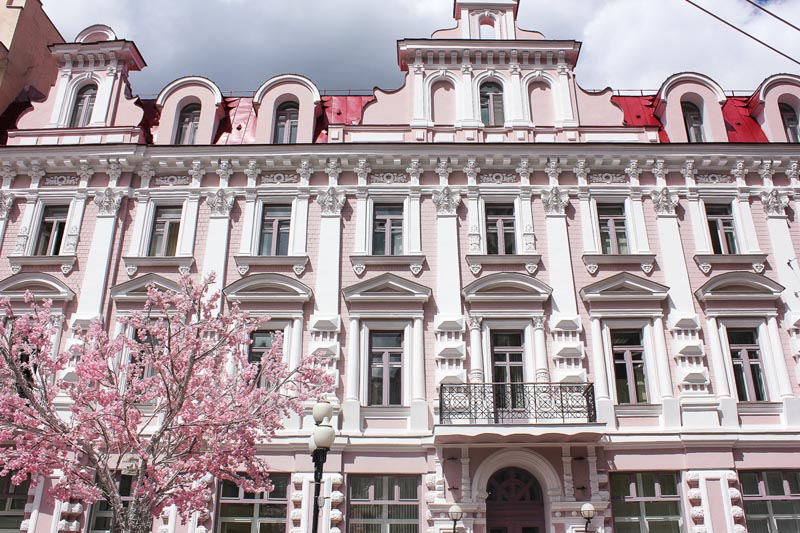
Novy Arbat Street is one of the most touristy areas in the city, with lots of shops and cafés directed at visitors. When you walk a little beyond, you’ll find a different part of town, where the hip scene thrives because so many artists live in the area. Just follow the small streets with fewer tourists!
9. Moscow State University View
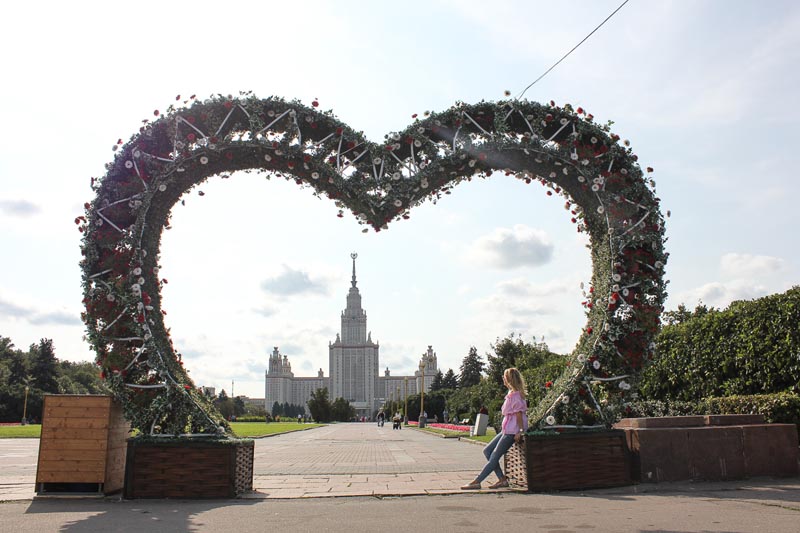
In his effort to create a grander Moscow, Stalin had seven skyscrapers built in different parts of town; they’re called the Seven Sisters. The largest of these buildings hosts the main building of the Moscow State University, one of the most prestigious colleges in Russia – and the one with the best view.
Although this is a little outside the city centre, the sight from above is more than worth it, with the nearby fountains and park and then the whole of the city behind them.
10. Russian Market
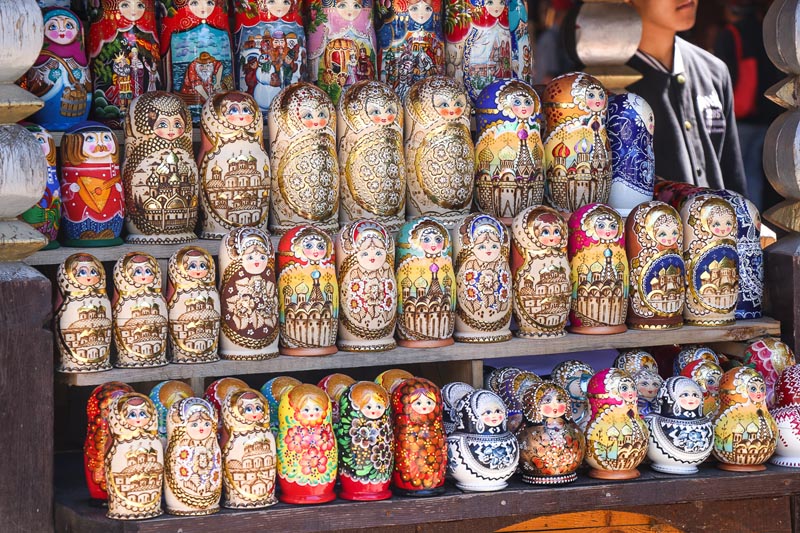
If you love to visit markets wherever you go, Moscow has one of the most impressive ones in the world – the Izmailovsky. You can easily take the metro here and feel like you’ve been transported to another time.
This place was first built in the 16th century and retains the look of an old fairytale, with a lineup of colorful old castle. A lovely local experience beyond the confines of the bustling metropolis, where you can also try some delicious Russian barbecue.
Here, you’ll find beautiful souvenirs at great prices.
Off The Beaten Track Moscow
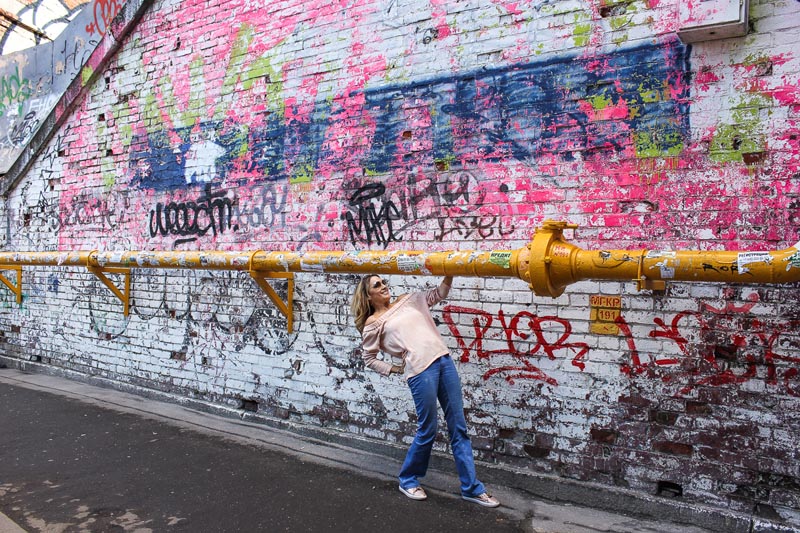
Once you’ve covered the most touristic spots, Moscow still has plenty to offer – and the places below will also be full of locals! Moscow is a city for hipsters, full of trendy and arty spots where you can literally feel the creativity oozing! So for some local vibes, I would strongly recommend my sweat spots below!
11. Patriarshiye Prudy
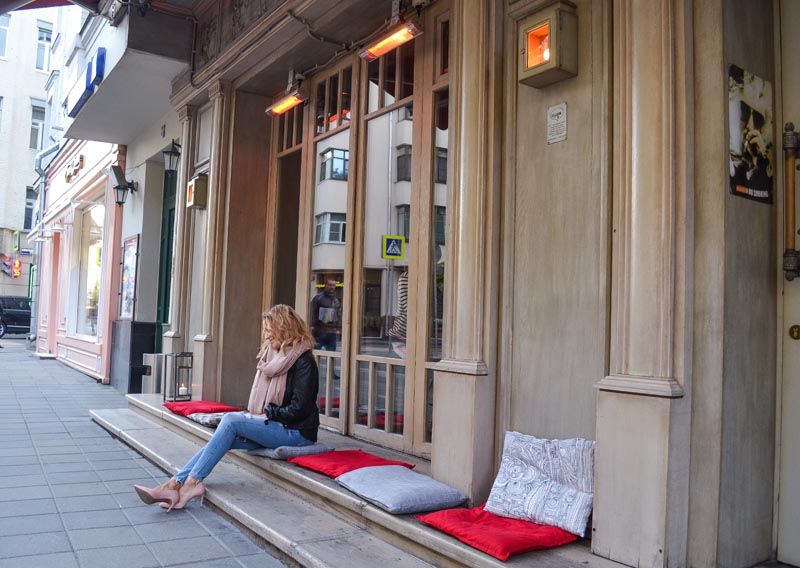
This is my favorite area in the entire city! While Moscow is generally a very noisy metropolis, Patriarch Ponds is far quieter, yet such a vibrant place. This is a very hip and trendy area making you think you are rather in Paris than in Moscow. Here the streets are narrow and full of chic eateries and clubs to see the local crowd.
A little bohemian and with an air of peace you won’t find anywhere in the city this is a great spot to spend an afternoon with your thoughts.
12. ArtPlay
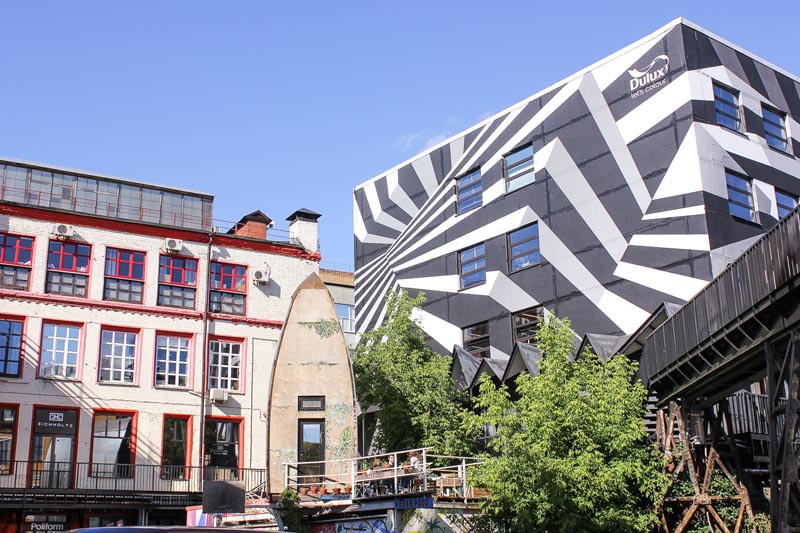
Barely 15 minutes away from the city center you’ll find the artsiest Moscow district: ArtPlay. For decades, this block was a factory, but it was renovated to become a hub for the arts not too long ago.
Now, you’ll find it’s full of exhibitions, showrooms and art schools – and some of the most creative people in town. Writers, painters, and young hip people use ArtPlay as a rendezvous, and you can feel the creative energy here. The industrial design with modern interior decoration is also a feast for the eyes!
13. Shopping Local Designs
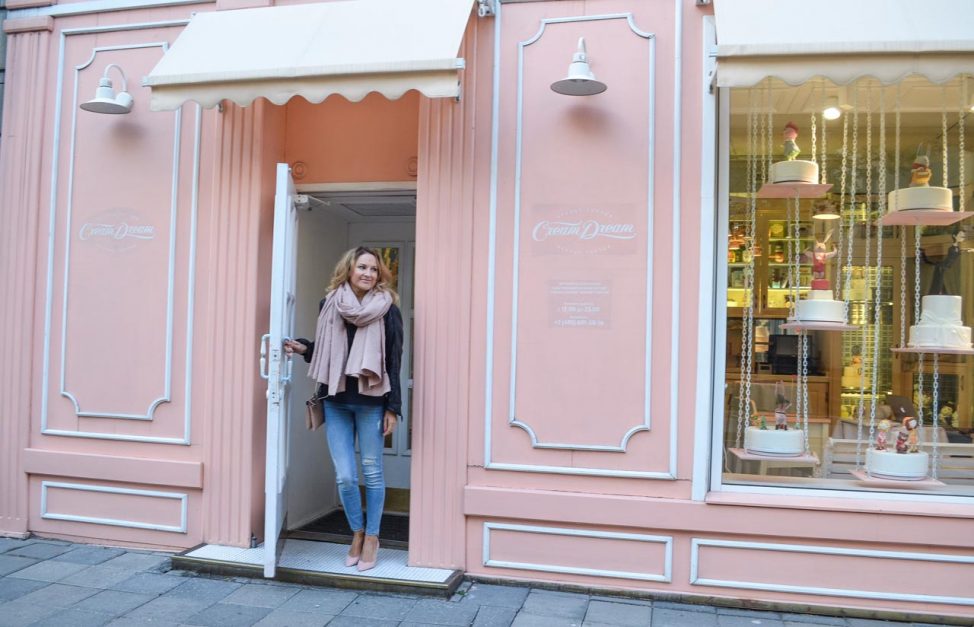
If you’re into design, both international and local, you’ll find lots of cute things at Patriarshiye Prudy. Department store Podium Market is also a great spot for shopping, as a department store everywhere in town, with lots of local and international brands. There’s one in the Four Seasons Hotel next to Red Square. My favorite Moscow mall is Tsvetnoy Central Market, a cool spot with great brands, lots of inspo, and even a cute café!
14. Moscow City
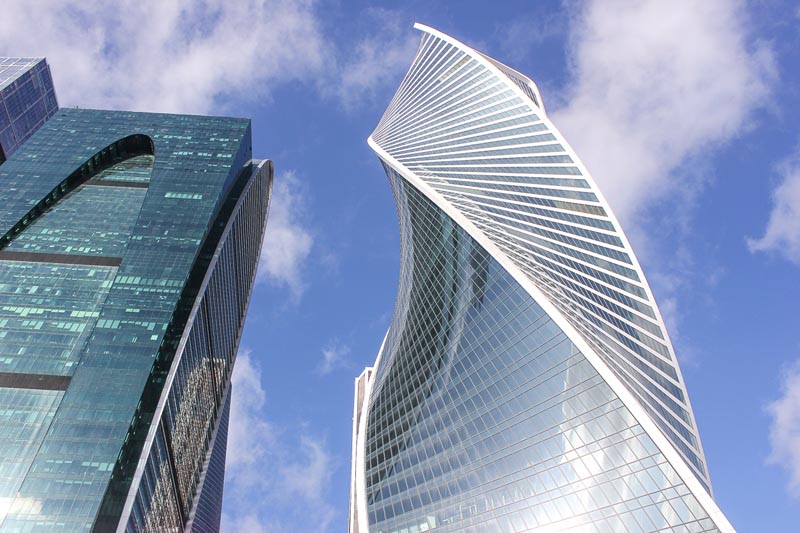
Like many other great capitals of the world, for the past few decades, Moscow has hosted a super modern area full of modern skyscrapers – Moscow City. With a completely different vibe than the rest of town, it’s like a mini Dubai, with lots of impressively tall glass buildings. Here, you’ll find the best rooftops in towns, such as Ruski and Sixty they are perfect spots for dining or enjoying a glass of wine with a view. There are also a relatively new shopping mall with lots of international brands called Affimall!
Wine, Dine, and Party in Moscow
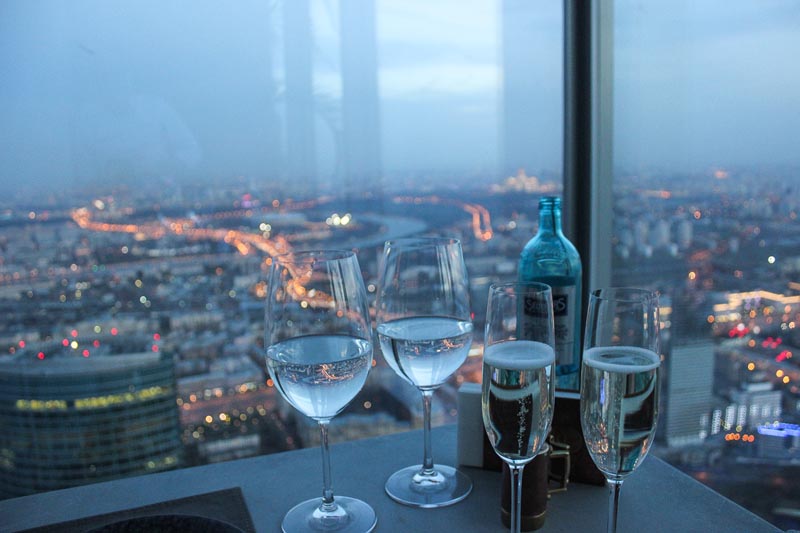
Gone are the gloomy Moscow days – cold as it might be in the winter, Russia’s capital is a place for the senses. Great food and drinks abound – and the clubs are hot, too!
15. Where to Eat in Moscow
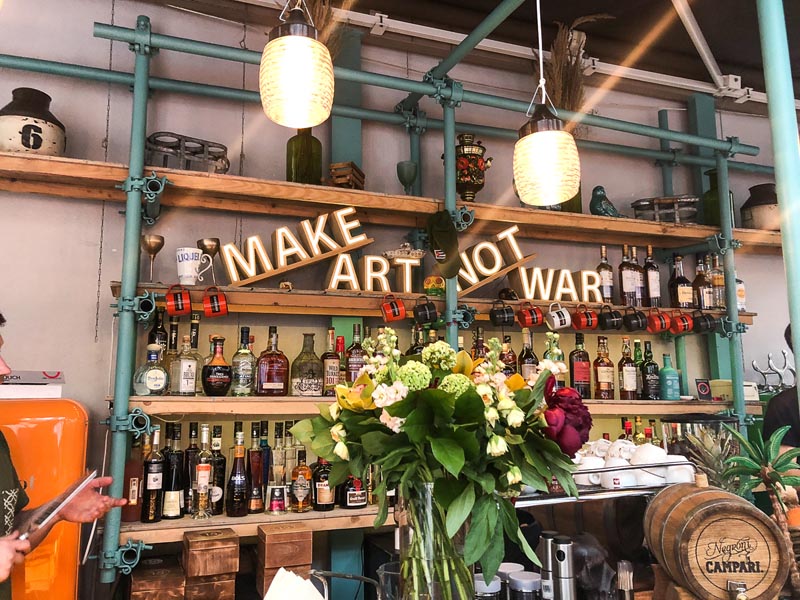
Moscow is a great metropolis where people love to dine out, and there are endless options for delicious food. The flavors are as diverse as you’d expect from a big city, with options of fine dining and little hipster eateries.
- For traditional Russian flavors, I can’t recommend Café Pushkin, Dr. Zhivago, and Turnadot enough.
- When looking for international cuisines, Italian is always the way to go, and my local favorite is Probka.
- Fine dining is best done among the clouds at White Rabbit, with European flavors.
- As for the hip spots, you can spend a full day just eating around trendy places, from burgers to Asian fusion.
More Dining Options
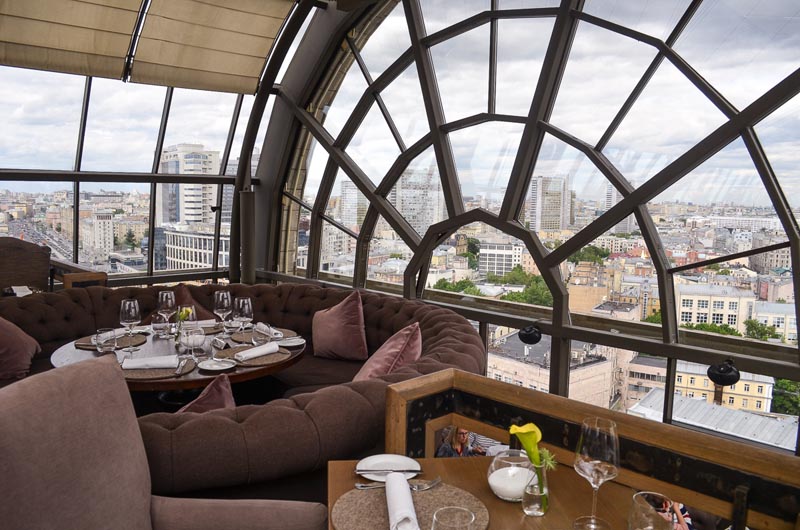
- Patriarshiye Prudy offers a lot of small and classy spots with cool concepts, like breakfast restaurants I Love Cake and Fresh.
- For dinner, I love the NYC experience of Saxon & Parole, and the wonderful trendy Pins, with its delicious food and drinks.
- For delicious Asian food head to CutFish.
- Lastly, there’s a recent revival of food markets in Moscow, offering lots of great choices of international flavors at affordable places.
- Don’t miss out the Vietnamese food stand at the Danilovsky market, and everything at Usachevsky!
16. Rooftopping
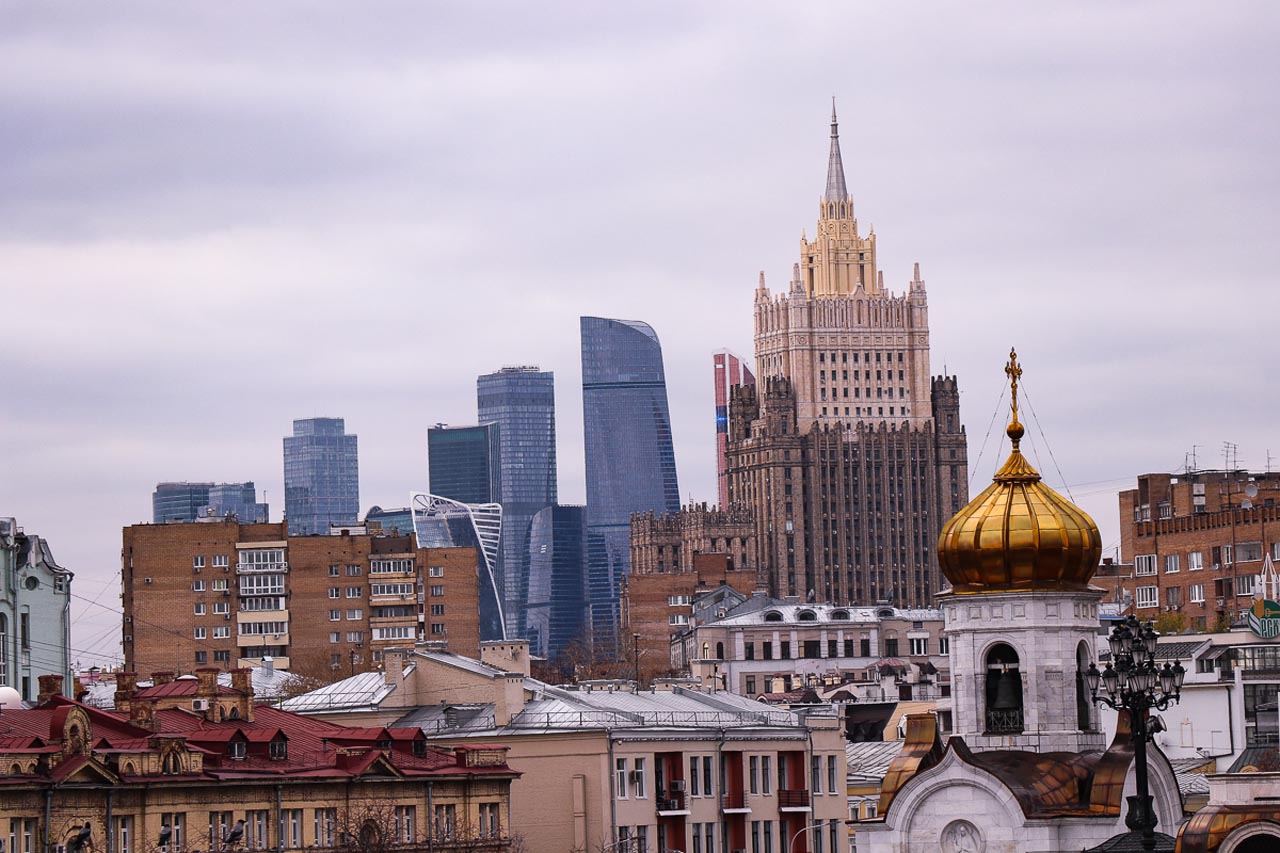
Big cities deserve to be seen from above, having a cocktail among the clouds. These are my recommendations for rooftop bars in Moscow.
- As I mentioned in the Moscow City section, Sixty & Ruski are two of my favorites, overlooking the newest part of town.
- White Rabbit and its fine dining is also a lovely place for a fun dinner looking down on Moscow.
- O2, in the city center, has an advantage above all others: amazing views of the Red Square.
- Buono, above the Radisson Royal Hotel, might be the most romantic rooftop hotel in town, with its candlelit setting.
- Also on the Radisson stands the Mercedes. It’s a luxurious and posh experience with delicious cocktails.
- The Sky Lounge offers a peculiar experience, mixing an old Soviet building with futuristic additions.
17. Moscow by Night
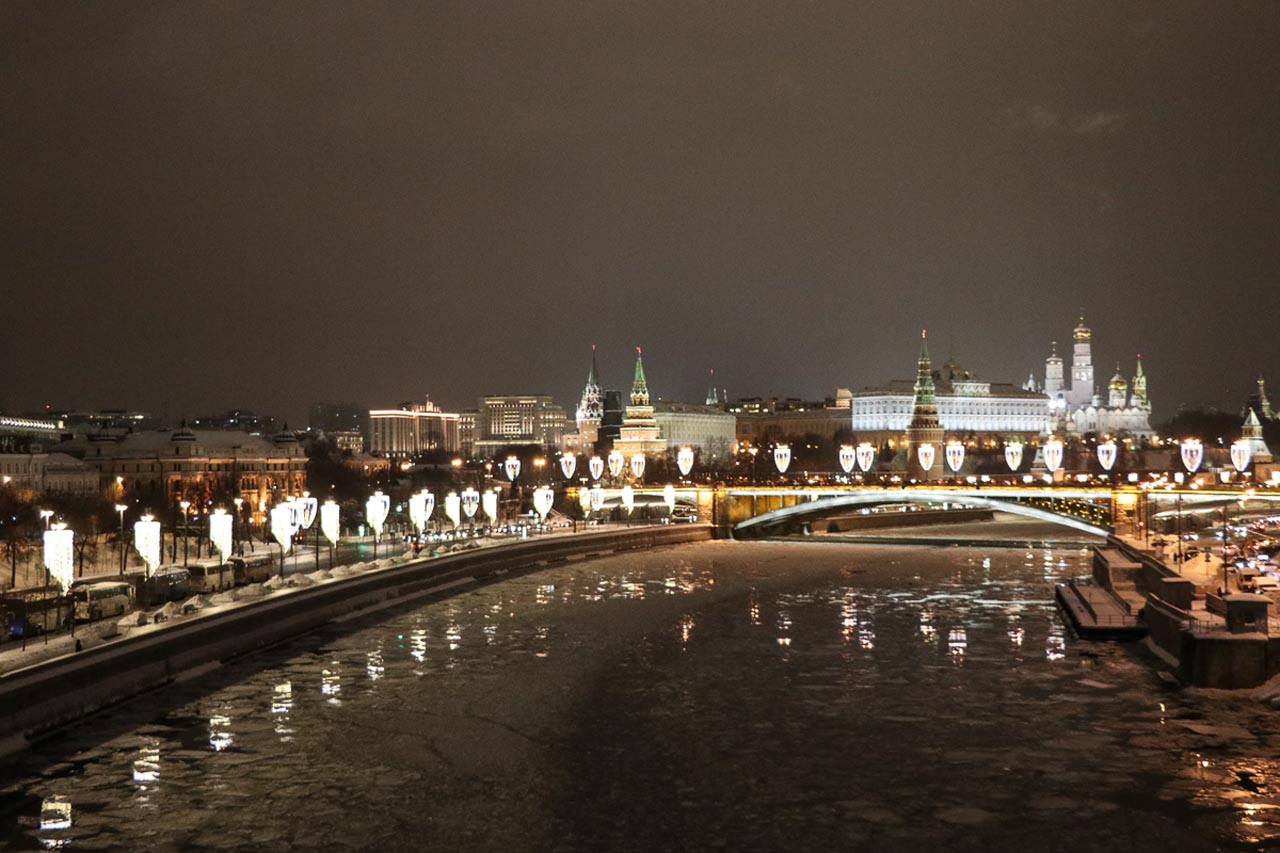
Party the night away! The city is full of bars everywhere, but there are some areas where you’ll find more than others.
- Patriarshiye Prudy has lots of hip and small clubs and great bars, including the super fun private club Clava, which has a great vibe and people from all walks of life.
- For more hipster style bars, Red October is the place to go.
- Streak is a summer favorite, with a lovely terrace to catch a beautiful sunset – plus, their mozzarella bar is delicious.
- At night, Red October lights up with clubs everywhere, including the cool rooftop one Gipsy.
- Jagger is also a great spot during summer with a more relaxed vibe in garden setting.
- For the traditional Russian luxury experience, go to SohoRooms, a whole other world including all-night go-go dancers.
There are so many things to do in Moscow at night and during the day, you definitely need several days to explore this exciting destination.
Moscow is a must-see city, a city like no other ! I hope you will enjoy this Russian metropolis as much as I did!
If you enjoyed this article on the , share it to Pinterest for future travel planning.
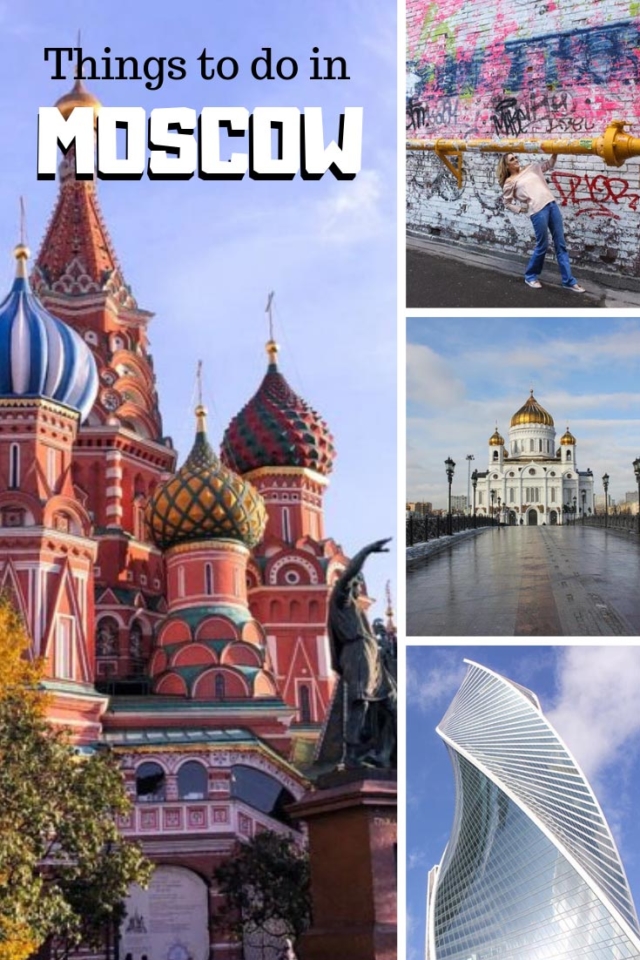
- Mother Russia Stands Proud at Volgograd
- 25 Haunting Chernobyl Pictures – 3 Decades after the Disaster
- 10 Reasons to Add Tbilisi Georgia to Your Bucket List
Follow Linda on Instagram guides! For more inspiration, follow my journey also on Facebook and Pinterest and see Linda’s bio below for more at her website.
Travel Planning Resources
Looking to book your next trip? Why not use these resources that are tried and tested by yours truly.
Flights: Start planning your trip by finding the best flight deals on Skyscanner
Book your Hotel: Find the best prices on hotels with these two providers. If you are located in Europe use Booking.com and if you are anywhere else use TripAdvisor
Find Apartment Rentals: You will find the cheapest prices on apartment rentals with VRBO .
Travel Insurance: Don't leave home without it. Here is what we recommend:
- Allianz - Occasional Travelers.
- Medjet - Global air medical transport and travel security.
Need more help planning your trip? Make sure to check out our Resources Page where we highlight all the great companies that we trust when we are traveling.
You May Also Like
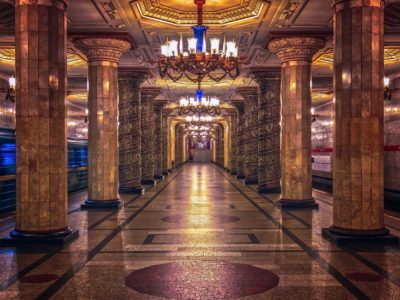
16 Interesting and Surprising Facts About Russia
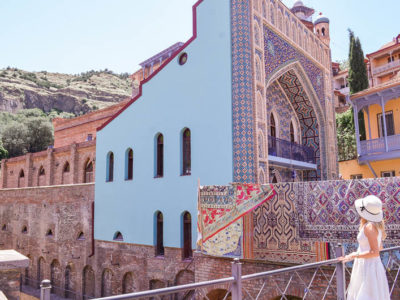
12 Beautiful Reasons to Visit Tbilisi, Georgia
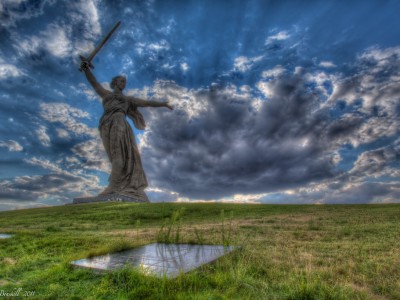
Motherland Calls – Mother Russia Stands Proud Over Volgograd
About Linda Voltaire
Linda Voltaire is the owner of Travel with a Silver Lining, home to reviews of gorgeous boutique & design hotels, hip & trendy eateries as well as authentic and personal travel experiences beyond the crowd. She started blogging after a life-changing trip across South America. Follow Linda at TravelWithASilverLining / Facebook / Instagram /
Join thousands of others who get our monthly updates!
Leave a comment cancel reply.
Save my name, email, and website in this browser for the next time I comment.
10 thoughts on “17 Exciting Things to do in Moscow”
These places look so awesome! Moscow is truly a beautiful city
Very good article, you have explained so nicely. Russia has always been a part of history and its good to know about much more about architecture and other things, wish i could see the inside of façade
Thanks for sharing such a nice article.You have very beautifully explained everything that one need for a trip to Moscow.
Nice article. Love the hidden gems and graffiti art, would love to visit Artplay. Thanks for a comprehensive guide to Moscow!
Moscow is a city where the past and the future live side by side. Here we can find everything from medieval fortresses and Soviet monoliths to glass skyscrapers and innovation centers.
Your article is good and meaningful .
Thanks for sharing about ArtPlay district, we didn’t know about it and it looks amazing 🙂 Hopefully there’ll be a second time in Moscow, we visited last May and really liked the city!
Wonderful stuff! I’ve been to Moscow, but not properly – it’s a long story lol!
Anyhoo, my next thing is to fly from Berlin to Moscow and then travel from there to Beijing via the Trans-Mongolian / Trans-Siberian train. Now, if only I could just find the time …!
I hear Moscow is very beautiful at night. I hope to get out there one day. A friend of mine went to St. Petersburg and had a great experience. Despite all the tension we see on the news with Russia and other Countries like the U.S. I wonder what the sentiment is with Russians and foreigners visiting their country for tourism. Especially Americans.
that looks like quite a beautiful place. 🙂

IMAGES
COMMENTS
ABOUT THE NEW YORK YACHT CLUB 1844. Sep 13, 2019. The Isle of Wight in the Solent has long been the epicenter of yachting in England. In 1851, a schooner painted black arrived there looking to win races. This was the yacht America, owned by John Cox Stevens, the first commodore of the NYYC and other club members.
The New York Yacht Club (NYYC) is a private social club and yacht club based in New York City and Newport, Rhode Island.It was founded in 1844 by nine prominent sportsmen. The members have contributed to the sport of yachting and yacht design. As of 2001, the organization was reported to have about 3,000 members. Membership in the club is by invitation only.
In 2019, Harbour Court hosted the Club's Dosquicentennial Celebration for members and friends to celebrate the Club's 175 years of history. The New York Yacht Club has hosted Race Week at Newport presented by Rolex since 1998 and many other regattas in recent years including world championships for the Etchells, J/70, Farr 40 and Melges 20 ...
With the arrival of the Summer Colony and the New York Yacht Club, Newport was on its way to becoming a yachting capital. The Yacht Club brought the famed America's Cup to Newport in the 1930s where it stayed until lost to the Australians in 1983. The fishing industry is still a vital part of Newport's economy, as is the United States Navy ...
History & Heritage Foundation Sailing Sites Private Events Public Tours ... New York Yacht Club Newport, Rhode Island ... As the host club, the New York Yacht Club has competed in every Rolex New York Yacht Club Invitational Cup since 2009, making 2019 the Club's sixth IC within the decade. NYYC won the IC in 2009, placed second in 2011 and ...
June 9, 10: The New York Yacht Club's 136th Annual Regatta. About 150 large racing yachts gather in Newport Harbor. The event starts at 9; the best place to watch from is the Inn at Castle Hill lawn.
A summer cruise among New York Yacht Club members has been an annual event ever since, with the exceptions of 1861, 1898, and the war years of 1917-1920 and 1941-1945. In 1998, the club celebrated the 100th anniversary of its first cruise to Maine. A rich and storied history of the New York Yacht Club is available on their website:
New York Yacht Club ⋆ The Sailing Museum. New York Yacht Club. nyyc.org. 37 West 44th Street. New York , NY 10036. (212) 382-1000. The Isle of Wight in the Solent has long been the epicenter of yachting in England. In 1851, a schooner painted black arrived there looking to win races.
Learn about the history behind one of NYC's oldest and most exclusive social and yachting clubs: the New York Yacht Club, founded in 1884 by John Cox Stevens.
The New York Yacht Club: A History, 1844-2008. by John Rousmaniere. This definitive new history of America's oldest yacht club and one of the world's best known clubs covers the Club from its founding in the cabin of a small sloop in 1844 through the America's Cup years - the longest winning streak in history - before the cup was finally lost in 1983.
The New York Yacht Club, founded in 1844, is the third oldest yacht club in the United States and an iconic symbol of sailing heritage. While its headquarters remain at the New York Yacht Club Building in New York City, its Rhode Island location is nestled in the exquisite Harbour Court estate and offers stunning panoramic views of Narragansett ...
The considerable advantage that the New York Yacht Club had exerted on the Cup since it first defended with a fleet of yachts on home waters in New York against the railway heir James Ashbury in 1870 was, by the 1960's, beginning to erode. A memorandum in 1962 had declared that if multiple challenges were received within 30 days of a successful defence that they would be 'received ...
About the Club. On July 30, 1844, John Cox Stevens (1785-1857) and eight of his friends met aboard Stevens' yacht Gimcrack, anchored off the Battery in New York Harbor. That afternoon, they established the New York Yacht Club (NYYC) and made three critical decisions that day: first, they elected Stevens as Commodore of the Club; second, they ...
About Us. Founded in 2007, the New York Yacht Club Foundation has contributed $8.1 million to fund much needed capital projects in both New York and Newport. The care and maintenance of these historic buildings require constant attention and is only made possible by the support of the New York Yacht Club Foundation. Make a donation.
NYYC Foundation. Founded in 2007, the mission of the New York Yacht Club Foundation is maintaining and restoring the New York Yacht Club's magnificent Clubhouses on 44th Street in Manhattan and at Harbour Court in Newport, Rhode Island. Through tax-deductible contributions and donations, the Foundation grants funds for the Club's important ...
1851. On August 22, the New York Yacht Club's schooner America wins a 53-mile race around England's Isle of Wight organized by the Royal Yacht Squadron. It is awarded a "100 Guinea Cup" or "Queen's Cup," as it was variously known. Later the trophy comes to be known as the "America's Cup," in honor of the schooner that won it.
About Us ». Club History. Newport Yacht Club was organized in 1936 through the efforts of the late Oscar Kuolt and several others. Its charter as a membership corporation under New York State law clearly stated ..its purpose: "To promote the sport of small boat sailing and small boat racing.". Its first location was on Newport Island, just ...
The new clubhouse epitomized the goal of the NYYC: to share and foster an interest in yachting and yacht racing. The Club's headquarters is located on 44th Street in New York City in midtown Manhattan. It is a six-story brick building with stone facing built in 1899-1900 for the club. The building houses the social, library, archives and ...
Moscow: City, Spectacle, Capital of Photography, an exhibition of 20th-century photographs of Moscow, opens at Columbia University's Miriam and Ira D. Wallach Art Gallery on Wednesday, April 30, 2003 and remains on display through Saturday, June 21, 2003.. Moscow has been a powerful magnet for many Russian photographers of the 20th century. Moscow: City, Spectacle, Capital of Photography ...
It was initially constructed in 1908, closed to passengers in 1934, and reconfigured as a fast commuter service last September. Travellers can ride it to Delovoy Tsentr station and the Moscow City business district, an image of 'new Russia', where buildings like the 1,227ft-tall Federation Tower scratch at the heavens.
The Pestovo Golf Club Course is a world-class 18-hole course stretching 6,483 m (about 7,090 yards). It has been specially designed to host major tournaments. It has artificial obstacles which compensate for lack of scenic beauty. It also offers a yacht club for entertainment and relaxation. 5. Moscow Country Club Course
Harbour Court. On Friday, June 10, 1988, 1,500 New York Yacht Club members and guests attended the first commissioning of Harbour Court, the club's first permanent waterfront facility. Standing on eight acres overlooking Brenton's Cove, the Renaissance Norman-style mansion was completed in 1906 for the John Nicholas Brown family.
Best Things to do in Moscow, Russia. Walking around Moscow is also going through the tumultuous history of the 20th century, which had Russia as one of its main protagonists. There are fascinating remains of these times everywhere in the former Soviet capital, from the gorgeous Seven Sisters skyscrapers to the Orthodox cathedrals that were closed for the better part of a century.